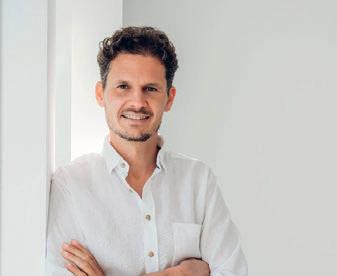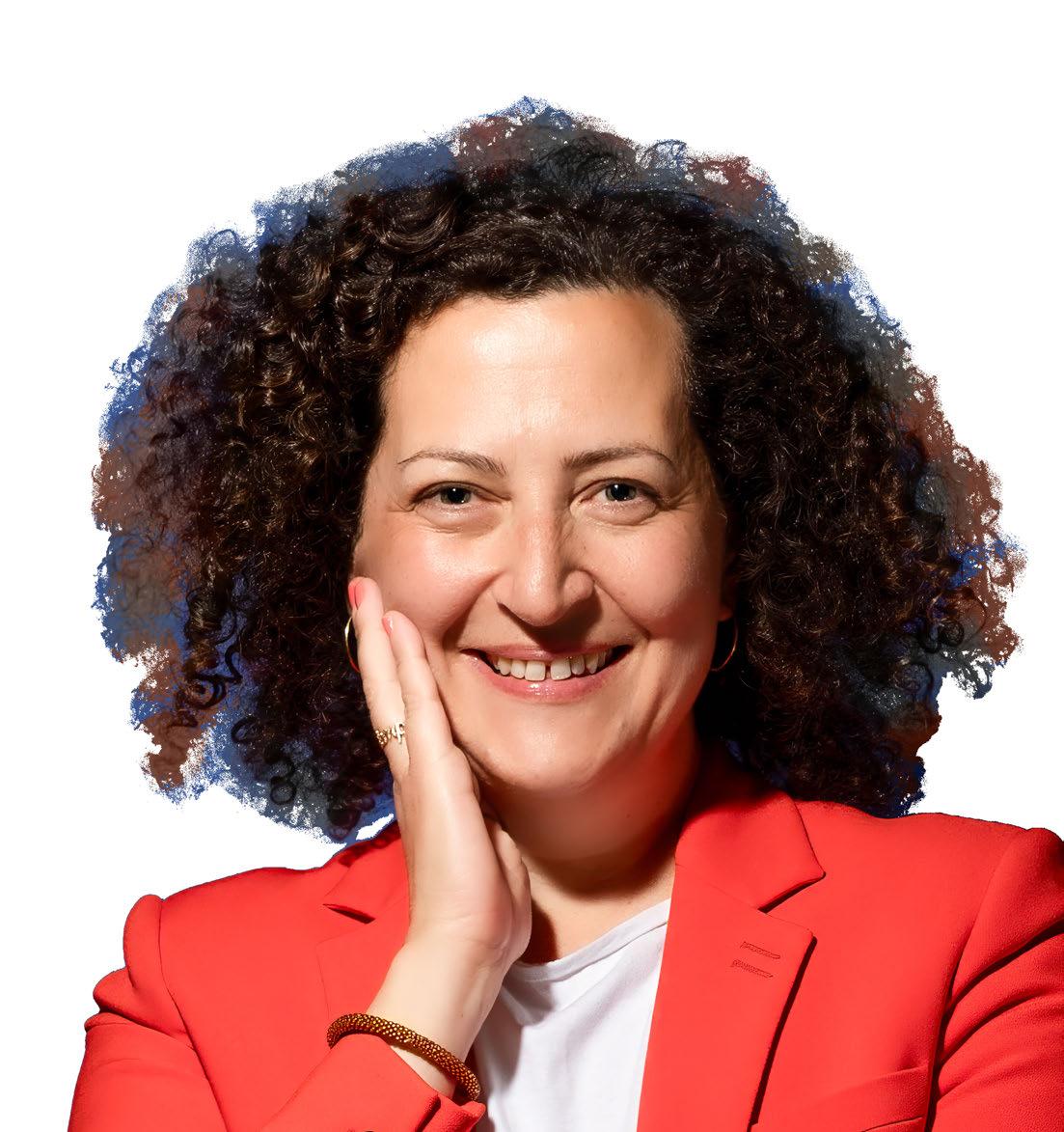
GénérationSansTabac2040


GénérationSansTabac2040
For Luxembourg to be tobacco-smoke free by 2040, reduced risk1 alternatives to cigarettes are needed to help smokers switch, says Christophe Michelet, General Manager BAT Benelux. Could the proposed de facto ban on nicotine pouches be counterproductive?

To achieve TobaccoFree Generation 2040, we must offer adult smokers real alternatives,” says Christophe Michelet,
Managing Director of
BAT Benelux.
To meet the government’s target of making the country smoke free over the next fifteen years, regulation should be in line with the evidence of what works best, argues Mr Michelet. “Just look at Sweden, which is close to becoming the world’s first smoke-free country and now has the lowest rates of lung disease in Europe,” he said. “But how was this achieved? By empowering consumers through choice, investing in education, and implementing regulation grounded in harm reduction – resulting in a smoking rate of just 5.3%. Sweden is the blueprint for other countries like Luxembourg who struggle to reduce smoking prevalence”. A Fondation Cancer study found that 23% of people smoke in Luxembourg, one of the highest figures in Europe.
Michelet also mentioned how the rate of smoking in the UK has halved to about 10% in just over a decade. He argued that this was largely facilitated by the authorities encouraging adult smokers to switch to smokeless alternatives.
Smoke is the main danger
Evidence suggests, said Michelet, that the majority of smokers want to quit, but find it hard to beat the nicotine cravings. “It’s the burning of tobacco that creates thousands of chemicals – many of which are harmful and associated with smoking-related disease.
What we want is for people who would otherwise continue to smoke to switch, and less harmful alternatives are helping them,” he said. “Smokers need an off-ramp to help them stop using cigarettes, and for many, tobacco-free nicotine pouches are a convenient option.”
Vaping is the most well-known smoke-free alternative, while others use patches to help them with their nicotine cravings. A more niche product are nicotine pouches (“sachets de nicotine” in French) which contain nicotine that is placed between lip and gum. They are different from tobacco pouches which have been banned for years outside of Sweden.
Smokeless alternatives
“That pouches have much lower levels of toxicants than cigarettes is a clear finding of our research,” he said. He pointed to a more than 99% reduction of nine toxicants found in cigarettes for oral nicotine pouches, a slightly better figure than for vapour products. Another alternative are “heated products”, whereby electronic devices heat tobacco instead of burning it to release aerosols containing nicotine. BAT’s research points to these products giving 90-95% toxicant reduction compared to smoking.
“Discretion and convenience are additional advantages to the adult user of nicotine pouches compared to smoking,” said Mr Michelet.

BAT technicians in their Southampton, UK research centre
Mr Michelet noted that pouches are relatively widely used in Sweden, and he points to this and the country’s low rates of smoking. He expressed concern over the proposed regulation in Luxembourg, which, he warned, “would amount to a de facto ban”.
A draft bill would cap nicotine content in pouches at 0.048 milligrams. By contrast, in European countries where nicotine pouches are available, they are typically sold in a range of strengths, from 2 to 20mg. “We strongly advocate for a nicotine cap that is consistent with the regulatory approaches adopted in other European markets,” adds Michelet.
He states that failing to deliver the alternatives they use to switch from smoking will potentially encourage consumers to look elsewhere to get pouches. He noted that an unregulated black market is waiting to be discovered online, with retailers elsewhere in Europe and beyond. “Restricting access to less harmful alternatives doesn’t help people change their habits,” he explained. “Take the Netherlands, for instance: despite tightening regulations on vaping and banning flavours, studies found that many users simply turned to the black market via online channels – and underage use continued to rise.”
He proposes a three-step strategy. “Step one is making sure that everybody understands that smoking is not good for health,” he said. While that understanding is based on science, so is step two, regarding looking at the evidence of what helps adult smokers to switch from cigarettes. “We’ve invested significant resources into scientific research, all of which is captured in our 300-page ‘Omni’ report - an evidence-based manifesto for change that reflects our commitment and progress toward building a smokeless world.” he said. “Omni highlights the science and innovation driving our transformation and the critical role smokeless alternatives can play in achieving on our vision of Building a Smokeless World. We aim to share this evidence with policymakers, retailers and adult consumers.”
“We are saying to governments ‘we are in it with you; we want to transition the market to reduced risk products, but this can only be achieved through smart,
90-95 %
99 %> 99 %
In 2008, the World Health Organization recommended the reduction of nine chemicals (“‘toxicants”’) in cigarette smoke. According to BAT’s research on its Smokeless Products, these nine toxicants are, on average, reduced by 90-95% for Heated Products, 99% for Vapour Products, and more than 99% for Oral Nicotine Pouches. BAT believes smokers should have the right to choose smokeless products and that is why BAT has invested billions into smokeless alternatives, published 265 studies on the science of tobacco harm reduction, and has a team of 1,750 scientists, researchers and developers.
evidence-based regulation, not through blanket bans, which fail to address the root of the problem.” Which brings him to his third step of his strategy. “We are also working with retailers, as they are the ones who directly engage with adult smokers and can help support them in their journey to transition away from cigarettes and opt for a smokeless alternative,” he said.
Preventing use by minors
Central to this, he said, is making extra efforts to ensure that nicotine is
not sold to those underage. He suggested moving towards a licencing system, whereby retailers could be incentivised and trained to ensure they help in these efforts. “Retailers need to ask for ID to make sure that the potential customer is 18 plus,” he said. A licensing system gives the authorities greater control over the sales channels and, in the event of infringement, enables them to take appropriate action, which may include suspension or loss of the licence. Use of nicotine pouches by underage has been the focus of
attention in Luxembourg in recent times. “We fully recognise the issue at hand, and we are eager to support the government and retailers to prevent youth access to these products. However, we must not overlook the role that nicotine pouches can play in reducing the harm for adult smokers,” said Michelet.
“ We encourage smokers to move to reduced-risk alternatives to help make cigarettes a thing of the past.”
Christophe Michelet, General Manager BAT Benelux
1
“We believe the most effective way to reduce smoking rates is to encourage smokers who would otherwise continue to smoke, to switch to smokeless alternatives,” he said. “Supporting adult smokers in switching to less harmful alternatives is a key part of the solution. But we cannot achieve this alone. That’s why we advocate for policies that prioritise public health and call for collaborative action across all stakeholders to deliver meaningful, lasting impact.”

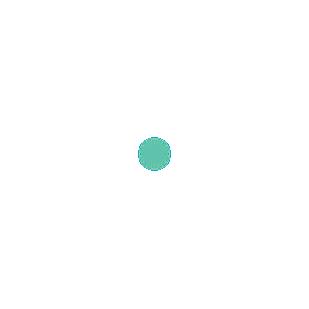









































CHARLES WEIS




Professionnal Golfer















MARIE SCHREIBER
Professionnal Cyclist





POWERED BY
The Mice sector has definitely turned the page on covid
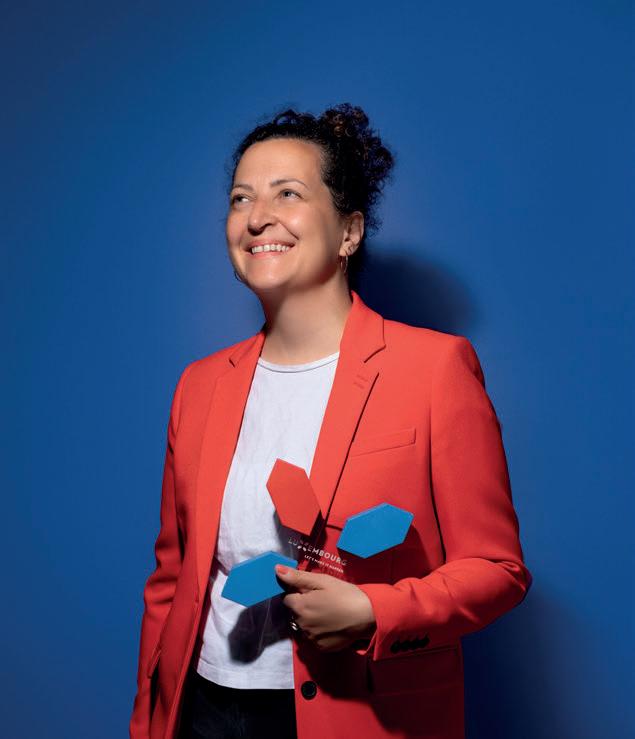
Attractivité de l’économie
Logement
Accès à la santé
Mobilité
Éducation
Sécurité
Fiscalité et pouvoir d’achat
2023 - 2028
Changement climatique
Aides aux familles
Mesure emblématique de la volonté du gouvernement de simplification administrative, le projet « once only » déposé à la Chambre des députés en juin 2024 est au point mort. Ce qui n’empêche pas le gouvernement d’avancer sur d’autres chantiers : la signature électronique des documents administratifs, MyGuichet.lu et la modernisation des procédures.
Journaliste MARC FASSONE

C’était la mesure emblématique du gouvernement pour faire émerger une administration « data driven » plus proactive et productive : le projet de loi 8395 relatif à la valorisation des données dans un environnement de confiance et à la mise en œuvre du principe de « once only » a été déposé le 11 juin dernier à la Chambre des députés par Stéphanie Obertin, la ministre de la Digitalisation. Presque une année après, l’examen du texte n’a que peu progressé. Ce 22 avril, il a été scindé en deux. D’un côté, il y a le projet 8395a consacré désormais au Commissariat du gouvernement à la protection des données auprès de l’État qui est désigné comme l’organisme compétent concernant la gestion des données par les autorités publiques – autrement dit l’organisme qui va donner l’autorisation d’utilisation et de réutilisation des données. Et de l’autre côté, on trouve le projet 8395b définissant les modalités de la mise en œuvre du principe du « once only » rendu obligatoire entre les administrations publiques.
Le « once only » au point mort
Pourquoi le projet n’avance-t-il pas ?
À cette question, Stéphanie Obertin répond qu’il s’agit d’un texte complexe qui touche notamment à la protection des données. « Ce texte doit être mûrement réfléchi. Nous ne devons pas nous tromper. » Une
complexité qui explique aussi que le Conseil d’État prenne son temps pour rendre son avis. Un avis que la ministre espère pour avant les vacances d’été, « ce qui permettrait un vote à la Chambre des députés vers octobre-novembre ».
En attendant, seul le Syvicol, le syndicat des villes et des communes luxembourgeoises, a rendu son avis. Un avis mitigé dans lequel il demande au gouvernement de clarifier les dispositions sur le principe afin de préciser les responsabilités et obligations exactes des communes dans la mise en œuvre de ce principe. Le Syvicol se dit en outre peu convaincu « que l’on puisse parler d’une simplification administrative et d’un gain de temps tels qu’avancés par les auteurs du texte, surtout en relation avec le principe du ‘once only’ et plus spécifiquement dans le contexte de la notification d’un administré relative au droit au bénéfice éventuel d’une prestation ou d’un avantage supplémentaire. Contrairement aux administrés, cette disposition entraînera un surplus de démarches à effectuer par les communes et donc une augmentation de leur charge de travail et une hausse des coûts y afférents. »
La signature électronique des documents administratifs validée
Le projet de loi 8089 relatif à la signature électronique des actes en matière administrative, également
Un e-wallet européen : à quoi ça sert
Le projet de portefeuille numérique européen veut faciliter la vie des citoyens européens. D’abord en simplifiant l’identification des personnes lorsqu’elles entreprennent des démarches administratives – demande de papiers d’identité, déclaration d’impôt ou accès aux informations de sécurité sociale –, ou privées – ouverture de comptes bancaires ou de lignes téléphoniques avec l’enregistrement des cartes SIM. Ensuite, en numérisant des documents administratifs de la vie quotidienne que sont les permis de conduire, les passeports, les cartes de sécurité sociale ainsi que les diplômes. Le portefeuille européen ambitionne également de faciliter la signature de contrats via la généralisation de la signature électronique ainsi que les paiements en ligne. Enfin, les prescriptions médicales pourront figurer dans le portefeuille afin de faciliter la délivrance de médicaments dans toute l’Union européenne.
Accélérer la stratégie numérique 2023: digitalisation et simplification administrative. Le gouvernement qui a dans ce domaine choisi trois priorités afin de positionner durablement le Luxembourg à la pointe des nouvelles technologies : les données, l’IA et les technologies quantiques.
Stratégie nationale des données: la brique fondamentale selon la ministre de la Digitalisation, Stéphanie Obertin. Le Luxembourg a fait le choix dans le projet de loi 8395a d’une gouvernance centralisée afin de simplifier la coordination entre les entités pour l’accès et la réutilisation des données. « La stratégie nationale des données est une base fondamentale pour accélérer la souveraineté numérique qui permettra au Luxembourg de garder le contrôle de ses données, de les gérer de manière responsable et d’optimiser leur utilisation », insiste-t-elle.
Intelligence artificielle: en matière d’IA, Elisabeth Margue, ministre chargée des Médias et de la Connectivité, a fixé ses priorités pour soutenir l’écosystème local : une mise en service rapide de sandboxes réglementaires, un cadre légal qui soutient l’innovation et garantit une protection des valeurs européennes, « surtout dans les cas d’utilisation à haut risque ».
Technologies quantiques: le ministre de l’Économie, Lex Delles, veut créer de la valeur économique en transformant la recherche de pointe en applications à haute valeur ajoutée, structurer un écosystème d’innovation en technologies quantiques en mobilisant les acteurs publics, privés et académiques, et renforcer la sécurité dans un monde post-quantique, en anticipant les menaces pesant sur les systèmes cryptographiques actuels.
porté par le ministère de la Digitalisation, a par contre été voté le 15 mai introduisant un nouveau cadre légal qui permet aux institutions, autorités et citoyens de signer numériquement leurs documents. « Un outil qui simplifie la procédure et s’inscrit dans l’objectif plus large de modernisation des services publics », expliquait à l’issue du vote le ministère. Ce texte prépare également le terrain, selon le ministère, pour le lancement de l’Eudi Wallet, le portefeuille d’identité numérique européen que le Luxembourg doit mettre en place d’ici fin 2026. Un portefeuille d’identité numérique qui sera basé sur l’e-wallet en cours de développement par la Commission européenne. Outre carte d’identité et permis de conduire, le portefeuille électronique européen pourrait intégrer passeports et visas, ordonnances médicales, permettre de signer électroniquement des documents officiels privés et même de payer sans contact.
MyGuichet.lu fait peau neuve
La perte du projet d’e-wallet luxembourgeois a permis au Centre des technologies de l’information de l’État (CTIE) d’affecter des ressources supplémentaires au guichet unique luxembourgeois. Un guichet qui est le bras séculier de la politique de digitalisation administrative du gouvernement. La simplification des procédures administratives et l’accélération du traitement des dossiers sont aux objectifs que s’est assignés le gouvernement. « Le gouvernement entend promouvoir davantage la numérisation des services et la simplification des procédures administratives de l’État, tout en conservant la possibilité de recourir à des échanges plus traditionnels et non digitaux », lit-on dans l’accord de coalition. Accord qui consacre un objectif clé : « le service aux citoyens est une des principales missions d’un État moderne ».
Celui-ci avait connu une refonte de son interface en janvier 2024. En octobre suivant, le site évoluait encore avec l’introduction d’une nouvelle rubrique ajoutée au menu
principal du portail intitulée « événements de vie ». Cette nouvelle catégorie présente des scénarios fictifs, qui couvrent certains moments clés de la vie quotidienne, tels que le mariage, la naissance d’un enfant, l’obtention d’un diplôme, le passage du permis de conduire, la recherche d’un travail, l’achat d’un premier logement ou le départ à la retraite. Une liste appelée à évoluer. À chacun de ces événements sont associées toutes les informations et démarches administratives associées.
Visioconférence possible pour les démarches administratives En parallèle, MyGuichet.lu offrait la possibilité de prendre des rendezvous en vidéoconférence. Jusqu’à présent, si la prise de rendez-vous pouvait être faite de manière digitale, il restait nécessaire de se rendre au dit rendez-vous en personne. La première administration à proposer cette alternative à un rendez-vous en présentiel est le helpdesk de Guichet.lu. La Caisse nationale de santé (CNS) a suivi le mouvement fin 2024. « Les nouveaux développements sur les plateformes Guichet.lu et MyGuichet.lu traduisent une fois encore les efforts investis dans la modernisation des services publics numériques, mais également dans l’inclusion de tous nos citoyens », détaillait Stéphanie Obertin lors de la présentation de cette évolution du portail.
L’Administration des contributions directes modernise ses procédures La simplification des procédures administratives et l’accélération du traitement des dossiers sont deux objectifs que s’est assignés le gouvernement. Et c’est l’Administration des contributions directes (ACD) qui sert d’étendard de ralliement sur ce point. En janvier 2025, le ministre des Finances, Gilles Roth, a présenté avec le directeur de l’ACD, Jean-Paul Olinger plusieurs changements



majeurs. « Nous sommes en train d’entreprendre une transformation majeure pour simplifier nos procédures, alléger les démarches pour les contribuables et faciliter leur interaction avec nos services. Nous allons accélérer la digitalisation pour traiter plus rapidement les dossiers simples afin de mieux traiter les dossiers complexes », indiquait Jean-Paul Olinger.
La mesure phare est le lancement de la déclaration d’impôts préremplie pour les personnes physiques. 20.000 ménages sont concernés, ceux ayant uniquement des revenus de type salaire ou pension et sans déduction particulière. L’envoi de déclarations préremplies sera étendu aux autres foyers disposant d’autres sources de revenus progressivement afin d’atteindre 100.000 ménages concernés d’ici 2028. Dans le même esprit, l’ACD va continuer d’améliorer son assistant électronique MyGuichet afin d’inciter plus de contribuables à remettre leur déclaration d’impôt en ligne. L’objectif est d’atteindre 85 % de déclarations déposées électroniquement.
Le 18 novembre 2024, l’ACD lançait son contact-center, un service pour une prise en charge rapide et un suivi optimisé des demandes des contribuables et dont le déploiement intégral sera terminé avant l’été. Des contribuables qui peuvent également accéder sur le site www.manner-steieren.lu à une calculatrice fiscale mise en ligne par le ministère des Finances. Calculatrice qui permet au contribuable de comparer sa situation fiscale 2024 avec celle de 2025, histoire de bien quantifier les gains issus des allégements fiscaux précédés par le gouvernement.
Nos précédents
21 février 2024 : le gouvernement avalise le projet de loi concernant des mesures destinées à assurer un niveau élevé de cybersécurité. Un projet de loi qui transpose la directive (UE) 2022/2555 du Parlement européen et du Conseil du 14 décembre 2022 dite directive NIS. Le projet de loi 8364 a été déposé le 13 mars 2024 et est en examen en commission.
24 avril 2024 : le gouvernement adopte la feuille de route stratégique nationale relative à la décennie numérique jusqu’à l’horizon 2030 pour le Luxembourg. Les principaux objectifs sont le développement des compétences numériques de tous les citoyens, le renforcement d’infrastructures sûres et durables, l’accélération de la transformation numérique des entreprises et la numérisation des services publics.
11 juin 2024 : la ministre de la Digitalisation dépose à la Chambre des députés le projet de loi 8395 relatif à la valorisation des données dans un environnement de confiance et à la mise en œuvre du principe du « once only ».
Un projet de loi scindé en deux le 22 avril 2025. Le projet 8395a porte désormais sur les autorités compétentes en matière de gouvernance de données et le projet 8395b se concentre sur la valorisation des données et le « once only ».
11 octobre 2024 : le gouvernement valide le projet d’intégration d’un système d’ordinateur quantique en tant que nouvelle partition de calcul dans l’environnement du HPC MeluXina situé dans le centre de données de Luxconnect à Bissen.
6 novembre 2024 : le Conseil approuve le projet de loi 8318 portant approbation du protocole d’amendement à la Convention pour la protection des personnes à l’égard du traitement automatisé des données à caractère personnel, fait à Strasbourg le 10 octobre 2018. Le texte est en examen en commission.
22 novembre 2024 : le gouvernement adopte le projet de loi 8479 qui ouvre la possibilité
d’introduire en ligne une demande en obtention des indemnités de chômage complet. Le projet est en cours d’examen à la Chambre des députés.
29 novembre 2024 : adoption par le gouvernement du projet de loi 8476 visant à mettre en œuvre les dispositions du règlement européen 2024/1689 sur l’intelligence artificielle, l’IA Act. Le projet désigne notamment la Commission nationale pour la protection des données (CNPD) pour coordonner l’action de toutes les autorités nationales compétentes sectorielles et pour servir de point de contact unique et d’autorité de surveillance du marché par défaut. Le texte est actuellement devant les députés.
13 décembre 2024 : la candidature luxembourgeoise dans le contexte du European High-Performance Computing Joint Undertaking de l’Union européenne visant la construction d’un écosystème européen pour former des modèles d’intelligence artificielle avancés et le développement de solutions d’intelligence artificielle par le biais de supercalculateurs européens ayant été retenue, le gouvernement approuve l’acquisition d’un supercalculateur optimisé pour l’intelligence artificielle et l’établissement d’une AI Factory associée. Accord matérialisé le 7 mars 2024 avec le projet de loi 8518, projet déposé à la Chambre des députés le 26 mars 2025 et en cours d’examen par la Commission de l’Économie.
15 mai 2025 : le projet de loi 8089 relatif à la signature électronique des actes en matière administrative est voté par les députés.
19 mai 2025 : Elisabeth Margue, Stéphanie Obertin et Lex Delles présentent l’initiative stratégique « Accélérer la souveraineté numérique 2030 » et les objectifs du gouvernement sur les trois axes stratégiques que sont les données, l’intelligence artificielle (IA) et les technologies quantiques.

BE PART OF IT
Luxembourg is a place where cultures meet. It is one of the most diverse and inclusive countries in the world, with over 180 nationalities and an average of 3.6 different languages spoken per resident. Each one of them makes Luxembourg a common ground. And so could you. Let your journey start here.
Services publics numériques pour les citoyens (score de 1 à 100)
Services publics numériques pour les entreprises (score de 1 à 100)
Formulaires
Transparence de la prestation de services, de la conception et du traitement des données personnelles (score de 1 à 100)
Opérations courantes des entreprises Déménagement
Transport Justice Santé Création d’entreprise Famille Carrière Études
Zoom sur l’e-Guichet
ÉVOLUTION DE LA FRÉQUENTATION DU SITE GUICHET.LU
Nombre total de visiteurs Venant du Luxembourg
Venant de Belgique Venant de France Venant d’Allemagne Venant d’autres pays
DÉMARCHES LES PLUS TRANSMISES PAR LES ENTREPRISES
Facturation électronique
Déclaration de retenue d’impôt
84.542
Déclaration pour l’impôt des collectivités 2023/2024
83.102
Dépôt d’extraits de compte salaire et pension pour l’année fiscale 2023
39.435
Taxes d’abonnement
37.040
Déclaration de la retenue d’impôt sur les tantièmes
14.942
Déclaration pour l’impôt des collectivités 2022/2023
14.391
Déclaration des revenus d’entreprises collectives
10.981
Déclaration pays par pays - Notification
9.115
Demande d’un certificat d’immatriculation temporaire
7.182
ÉVOLUTION DES TRANSMISSIONS DE DÉMARCHES
DÉMARCHES LES PLUS TRANSMISES PAR LES PARTICULIERS
Facturation électronique
Prise de rendez-vous auprès de la CNS
Demande d’extrait de casier judiciaire
Déclaration de retenue d’impôt
Déclaration pour l’impôt des collectivités
Déclaration pour l’impôt sur le revenu 2023
76.662
Envoi de pièces à la CAE
68.049
Dépôt de candidature pour un poste à l’État
64.685
Demande de vote par correspondance
64.656
Demande de participation aux cours de l’INAP
36.552
Accès aux informations personnelles stockées par les autorités publiques
Accès à des informations provenant de bases de données ou registres publics
Obtention d’informations sur des services, prestations, droits, heures d’ouverture…
Téléchargement / impression de formulaires officiels
Rendez-vous ou réservation
Réception de communications / documents officiels
Transmission de la déclaration d’impôts
Demande de documents ou certificats officiels
Demande de prestations ou de droits
Autres demandes, réclamations ou plaintes
Expertise comptable et fiscale
Le Grand-Duché attire des entrepreneurs du monde entier.
Les opportunités y sont nombreuses, à condition de se conformer au cadre règlementaire en vigueur. Rencontre avec Daniel Adam, Managing Director d’AR Services, cabinet d’expertise comptable et fiscale.
Contenu sponsorisé par AR Services
Le Grand-Duché s’est imposé comme un territoire propice à la création et au développement d’entreprises. Quels sont ses facteurs d’attractivité ?
Je pense que c’est avant tout sa stabilité économique et politique qui séduit les entrepreneurs. C’est un facteur déterminant pour la réussite d’un projet de ce type. Les charges sociales sont en outre très basses et la fiscalité est avantageuse.
Le multiculturalisme du pays en est une conséquence, qui à son tour renforce l’influence du Luxembourg autour du monde. C’est un cercle vertueux finalement.
Et puis c’est aussi une nation qui sait se remettre en question, aller de l’avant. Sans doute sa taille lui permet-elle ce dynamisme et cette réactivité qui sont des atouts forts.
L’État et la modernisation de ses services a-t-il été à ce point décisif ? Comme je vous le disais, le pays sait se mettre en mouvement et réagir. Ce fut le cas hier avec la digitalisation et aujourd’hui avec l’IA. Que ce soit pour les citoyens comme pour les entreprises, c’est très rassurant et confortable de savoir que le Gouvernement modernise ses infrastructures, prépare la continuité face à l’arrivée des nouvelles technologies. Cela ouvre également des opportunités business et entraine une émulation saine et propice à la compétitivité du marché. Cela dit, il y a encore des progrès à faire en ce qui concerne la lourdeur de certaines démarches administratives, ou en termes d’harmonisations règlementaires !
Les entrepreneurs doivent y être attentifs en arrivant au Luxembourg ? En effet, dès le départ, il faut être attentif au cadre règlementaire en vigueur. Nos clients venant de toute l’Europe, parfois même de pays hors UE, la
règlementation qu’ils connaissent est très différente de celle qu’ils trouvent ici. Nous pouvons donc accompagner les entreprises sur ce point, mais tout n’est pas de notre ressort. C’est pourquoi un dialogue approfondi avec le client est essentiel dès le début. Comprendre là où le client souhaite se diriger, avec quels outils et quelles finalités, nous permet de le guider au mieux et lui évite de faire des erreurs.
Concrètement, quels services proposez-vous à cet égard ?
C’est un accompagnement de A à Z, de la création de la société à sa possible liquidation. AR Services prend en charge toutes les formalités liées à la constitution d’une entreprise, à ses statuts juridiques, à l’enregistrement au Registre du Commerce, à l’ouverture d’un compte bancaire, entre autres. Nous assurons aussi les missions d’ingénierie fiscale, les déclarations d’impôts et tous les services liés à la comptabilité : fiches de paie, enregistrement des notes de frais, etc.
Notre force réside dans la coordination de ces volets sous un même toit, avec un interlocuteur unique.
Pouvez-vous nous présenter la société AR Services, son activité, ses clients ?
AR Services est une société d’expertise comptable et fiscale, qui a été fondée en février 2016 et rassemble 11 employés ici au Luxembourg. Nous accompagnons et conseillons les entrepreneurs indépendants, les start-up mais aussi les PME, ainsi que des groupes internationaux ou des institutions. Ces clients sont issus de tous les secteurs d’activité, de l’immobilier au commerce en passant par l’investissement. Nous leur offrons tous les services relatifs aux domaines fiscaux, comptables, légaux et de la mise en conformité, notamment.
Les entrepreneurs expriment souvent leur désarroi face aux contraintes qui découlent de l’évolution règlementaire. Quel regard portezvous à ce sujet ?
C’est une réalité incontournable, qui touche tous les entrepreneurs quelle que soit leur activité ou la taille de leur
entreprise. Le corpus règlementaire s’alourdit perpétuellement, la mise en conformité qui leur est imposée est, elle aussi, de plus en plus poussée et exigeante. Nous le voyons bien, de notre côté, les points de vigilance et de vérification se multiplient. En revanche, je tiens à tempérer ce constat, le Luxembourg s’en sort mieux que certains pays voisins sur ce sujet. Là aussi, pour un entrepreneur, c’est un avantage concurrentiel certain qu’offre le GrandDuché. Notre rôle est aussi de rendre cette complexité accessible.
Quels défis et opportunités pointent à l’horizon sur ce point ?
Il est clair que la digitalisation et l’IA vont redistribuer les cartes, à la fois pour les procédures administratives et règlementaires, mais aussi pour les missions comptables. La digitalisation de certains process sera synonyme d’opportunités, à condition qu’elle n’engendre pas plus de complexités règlementaires. Les entrepreneurs devront anticiper ces mutations pour en faire des leviers de croissance. AR Services sera dans tous les cas à leurs côtés.
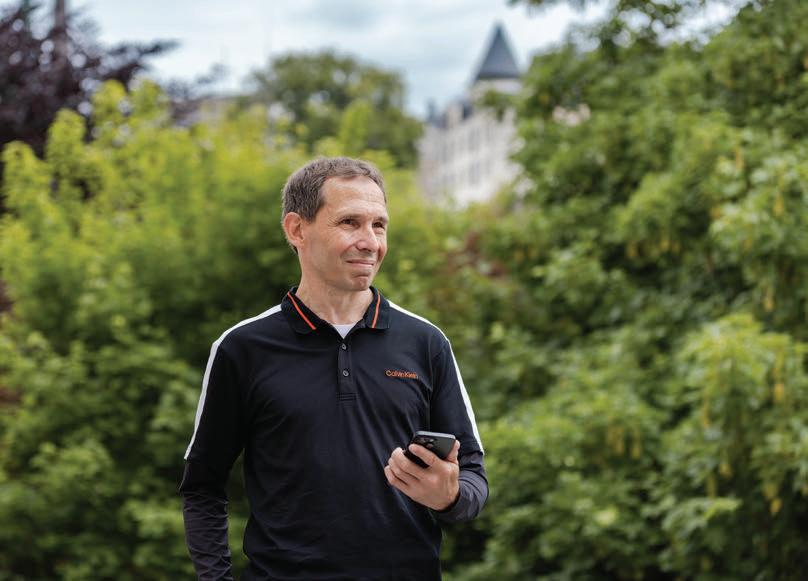
Daniel Adam, Managing Director AR Services
AR Services en chiffres
200 c’est le nombre de fiches de paie que traite AR Services chaque mois.
+25 %
de créations d’entreprises au Luxembourg en 5 ans. Un signe fort du dynamisme local, porté par une fiscalité attractive et un cadre stable. AR Services soutient activement cette croissance. (source : Statec)
90 %
des clients d’AR Services sont des PME ou des start-up.
+/-7 jours
c’est le délai moyen pour immatriculer une société au Luxembourg.
20
Beryl Koltz
“Luxembourg is a strategic ally!”
32
Business tourism
The Mice sector has definitely turned the page on covid
In 2024, Luxembourg stepped up its global ambitions with a dual strategy: boosting international visibility through nation branding and consolidating its role as a rising destination for business tourism. As the country prepars to unveil a brand-new action plan--complete with a new “Luxembourg House” and a valuedriven communication platform--it is also recording historic highs in its Mice sector. With more than 9,000 events and 241,000 international visitors, the grand duchy is positioning itself as a central, reliable and
sustainable hub for meetings and innovation. Backed by strategic coordination between ministries, tourism actors and branding teams, Luxembourg’s message is clear: it is not only open for business, but ready to accelerate global partnerships, attract talent and shape its international image for the decade ahead.
Conversation Beryl Koltz
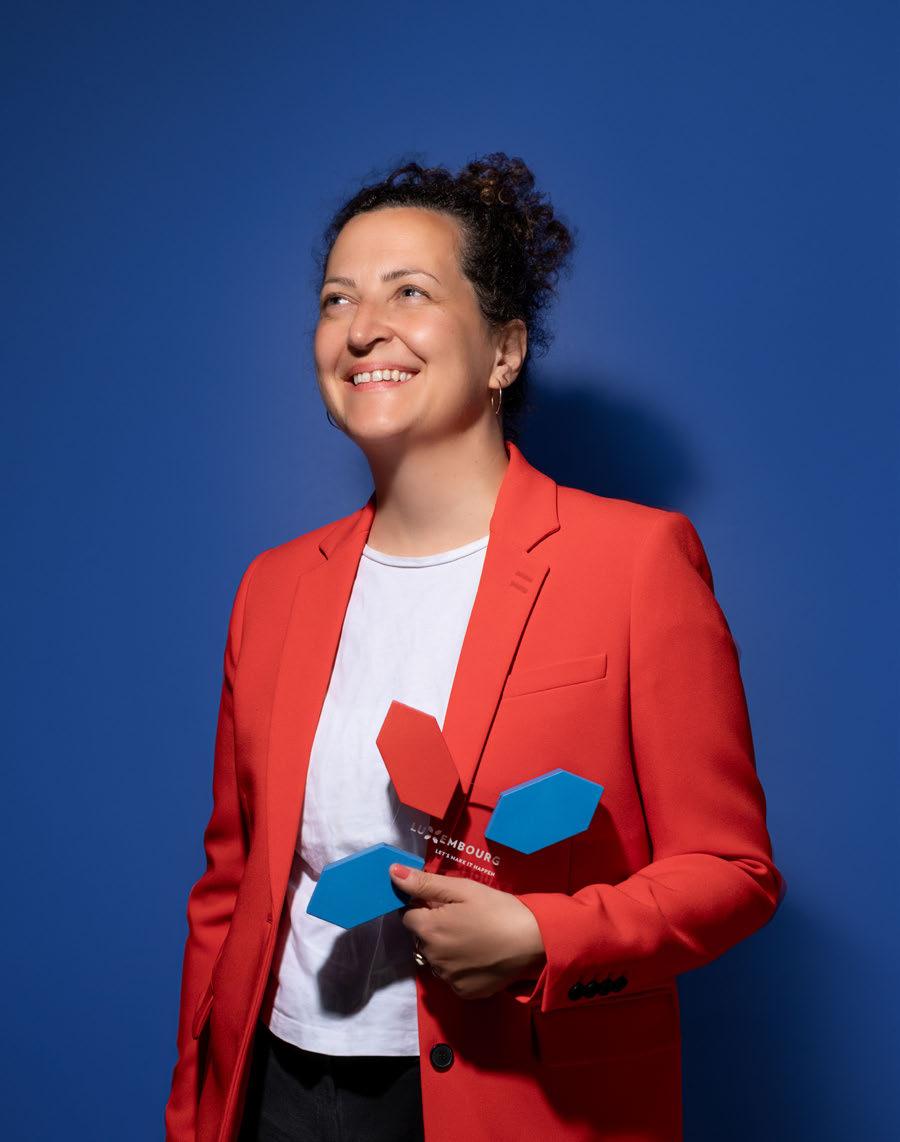
With Beryl Koltz at the helm of the project, Luxembourg’s nation branding has hit its stride. Next year the country will get a new “Luxembourg House” and a ten-letter communication strategy. It’s all about the vision of Luxembourg, helping it maintain its world status, and making its residents proud.
Journalist
Luxembourg’s nation branding project is regularly, albeit gently, mocked. Why? Is it misunderstood or merely unappreciated?
Perhaps it’s indeed an easy target, in the sense that it’s quickly misunderstood, or quickly misused--particularly through the slogan “Let’s make it happen”--and made into a sort of antithesis to the criticisms or frustrations some people may have regarding the functioning of institutions or specific issues. It’s easy to boil everything down to this slogan. But I find that in recent years we’ve been rather spared. We’re beginning to realise that, through our work, we’re trying to serve many stakeholders, to advance the promotion--or especially the perception--of Luxembourg internationally.
Every year, 10,000 to 15,000 new people become residents of Luxembourg. There are also cross-border commuters who come, work and leave. How does the nation branding get through to them?
Let’s just say that, in our work--when we give presentations to the general public--it’s not so much about explaining what nation branding is, but rather about highlighting Luxembourg’s strengths. Nation branding is an exercise in promoting Luxembourg. We’re going to talk more about the values, the faces of the country. We have a presentation built around the ten letters of the word “Luxembourg” that allows us to highlight the country’s major strengths. It’s a presentation we want to develop further next year, for our tenth anniversary, because it lends itself really well to it. For example, it begins with “L” for Lëtzebuergesch--yes, we have our own language. And it’s true that the Luxembourgish language, as a vehicle of authenticity, is an element we’re putting much more emphasis on in our new strategy than a few years ago, when we communicated mainly for an international audience.
Who is it aimed at?
Our mission is to inspire and connect those involved in promotion and to
promote Luxembourg throughout the world. And in this mission alone, you can already distinguish two types of audience. The first is the promotion stakeholders themselves. And I would say that a very large part of our work is precisely to inspire them, to connect them, to raise their awareness of the messages and tools we have developed with them--really with and for them. And then there is the other part of our mission, which is to promote Luxembourg throughout the world.
And what is the ultimate goal?
To attract new businesses to Luxembourg?
So, the objectives are multiple--and that’s what makes this work so interesting. The first is economic diversification. We were born at a time when Luxembourg felt the need--and expressed the desire--to diversify its economy. And we are one of the driving forces behind this diversification, in line with the economy ministry, to which we now report. Then, of course, there is attracting talent, which has
Defining the profile country and messages
Creation of the Inspiring Luxembourg Committee with the aim of developing a strategy to promote the country’s brand image. At the same time, public consultations are set up with a website open to the public, discussion/ working groups.
Brand definition
Definition of the values and profile of the ally.
A creathon is organised on the concept of the project’s visual identity.
Getting people to rally around the brand: National Focus
Presentation of the new visual identity.
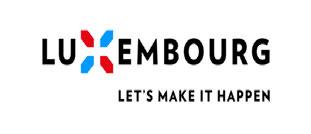
Consultations for the strategy and action plan with a committee, diplomatic network, working groups, participation of the private/public sector and civil society.
become very important. This is an initiative we also support. There is also attracting visitors--we tend to say “visitors” rather than “tourists” these days. Then there’s Luxembourg’s soft power in the world. That is, how the country is perceived internationally, and everything that involves influence without resorting to force or coercion. And finally, a very important aspect of our work is what we call, in nation branding jargon, “citizen pride.” That is, working on national pride: raising awareness among Luxembourg residents, or even Luxembourgers abroad, of their role as the “faces” of Luxembourg. They, too, have a role to play in making the whole thing work.
How do we measure whether it’s effective or not?
That’s a very complex question, especially given the type of work we do. We try to measure certain indicators. For example, we conduct image studies that help us see how the perception of Luxembourg is evolving around the world. And overall this perception is positive, moving in the right direction. We also monitor our online reputation. But our most telling indicators are those related to the use of our concepts and tools by promotion stakeholders. And there, we can clearly observe certain trends. For example, in recent years,
Presentation of the strategy and action plan 2021-2025
we’ve identified three main target groups: investors and entrepreneurs; visitors; and talent. Today, the public entities that target the three groups are part of the Luxembourg brand architecture.
What have you been up to this year? There’s plenty to do when it comes to brand management. Every day, we have requests for authorisation to validate: either to use or to create new logos that fit into the brand architecture. And then there’s brand monitoring, including non-compliant use. We don’t have all the results from 2024 yet--except for Luxembourg--but we haven’t made them public yet. We took the opportunity to evaluate our own brand, and the results show that it’s really well-known.
And you breathed a sigh of relief? I was happy, yes. Last year we processed 400 files. And by “file” I don’t mean someone merely calling to ask for information, but rather complete cases. We reached around 2,500 people through our presentations. We financially supported 21 projects or events, materially supported 95 and saw a more-than-21% increase in followers on social media and a 28% increase in orders.
Strategy and action plan
2021 - 2025
International focus
Creation of the lmih.lu website with messages, visuals & back office.
Launch of the ‘Our Common Ground’ campaign.

Awareness-raising and development of the Luxembourg Make It Happen community.
Evaluation of the 20212025 action plan and consultation for the next one.
It feels a bit like a marketing agency, providing tools to institutional or private stakeholders to promote the country. No?
Our website, launched three years ago, is now available in three languages: English, French and Luxembourgish. LMIH.lu is the website dedicated to promotion players. It contains all the key elements: concepts with messages, a visual universe, brand framework and also a toolbox with photos, videos, etc. And then there are other resources available, such as partnership opportunities with the brand, or the Luxembourg Collection, which brings together physical tools. So yes, a significant part of our work is clearly communication, designed to be used by those involved in promotion.
Talking about economic initiatives: ministers often rely on your tools, as do other figures who represent Luxembourg internationally. But what does the competition look like out there? Yes, the competition is very real. But Luxembourg’s positioning is a little different. It’s that of a strategic ally. The ideal partner for deploying initiatives. Luxembourg has always had a tradition of multilateralism. It has no interest in playing solo or trying to put on a show all by itself. Our strategy is also to remain attentive to what our European partners, our allies, are doing and to position ourselves intelligently. And that’s also one of Luxembourg’s major assets: political stability, which allows us to construct coherent messages over the long term.
What are the values, then, that we should remember when we’re in Luxembourg?
The values of Luxembourg, defined by broad citizen consultation, are openness, dynamism, and reliability. Beyond that, we also highlight the country’s soft factors. The fact that a resident speaks an average of three to six languages, that English can absolutely be a working language, as can French, of course. That’s one of the strengths. Then, as we were talking about, there’s stability, the reliability of infrastructure, the quality of infrastructure, the quality of life.
Another soft factor that we usually highlight is the whole nature aspect. It’s a very green country; a third of the
is an exercise in humility perseverance.”and
territory is covered in forests.
And there’s also a truly sustainable approach, in terms of energy, etc. We really try to promote renewable energies. In this context, three priorities guide our approach: creativity--including its economic dimension--diversity, and sustainability.
So the goal is to promote the values and faces of Luxembourg... it sounds trite to say it like that, doesn’t it?
But I guess it’s the case for every country on the planet.
Yes, except that for Luxembourg some people’s preconceptions are that it’s a kind of artificial construct. A kind of city-state. Many people don’t even realise that Luxembourg has different cities, a lot of nature, very varied landscapes. They don’t know that it has its own language, Luxembourgish. Often, people abroad say to us: “Oh really? You have your own language?”
So for us, there’s this objective of informing, and also of correcting prejudices. And if we compare it with other countries that do the same thing, they sometimes tend to focus on a very specific aspect. We, on the contrary, try to open up, to nuance the image of Luxembourg as solely a financial centre--which Luxembourg needs, it’s not at all a question of challenging that--but to show that there is

Passez à l'électrique ! Découvrez la gamme de véhicules électriques Ford et réservez votre essai dès maintenant.
much more. That Luxembourg has much more to offer. And in that sense, precisely--at least since I’ve been here-we’ve really developed the whole cultural, historical aspect, the heritage and language. We’re putting a lot more “Luxembourgish” forward. And because of that, I think we don’t come into conflict with anybody who shares these values. On the contrary.
Luxembourg’s perception abroad, particularly as a financial centre, hasn’t always been positive. I still know many journalists in Paris who never miss an opportunity to talk about it as a tax haven. Are things getting better in that regard?
We have a very pragmatic approach. We base ourselves on image studies. For example, we conducted a study in 2024, using the same countries surveyed in 2019, and we clearly see that the perception of Luxembourg has improved, has become more positive.
Conversation Beryl Koltz
And so in that sense, I think yes: every political action, every new measure has an impact.
And how does it work? Because now you report to the economy ministry. Are politicians coming to you and saying: “We have this need.” Or are you the ones going to them and saying: “Don’t forget this, we created it, use it, it’s important!”?
I really think that, as I was saying… what’s very important for us--and for all the teams around the world who do nation branding--is to be apolitical. We have to ensure that, despite the different political mandates, the approach and concepts remain stable. So we don’t get too caught up in this logic. Of course, we receive remarks, comments, which we can pass on. We can draw attention to certain things. But often, these are issues that are already on the decision-makers’ radar.
Ashowcaseforlocalexpertise
Planned for 2026, the new LuxembourgHousewillbelocatedatthe “Konrodseck”, close to the former Maisondel’EuropeandformerGuilly departmentstore,intheimmediate vicinityoftheMinistryofForeign Affairs.Largerthanthecurrentlocation,itwillofferastrongerwinetourismdimension,includingatasting area.This“LuxembourgHouse2.0” willcontinueitsmission:topromote localexpertisethroughaselectionof productsfromtheLuxembourgCollection--a line of local, sustainable, contextualised creations, each with an associatedstory.Itwillalsofeature itemsdesignedbyLuxembourgproducers and creatives. In addition to its B2Cboutique,theLuxembourgbrand hasaB2Bplatformforembassies, ministries, and businesses on LMIH.lu.

Like what?
Issues like housing, for example. Or that some people might feel unsafe in a neighbourhood. That said, Luxembourg still remains a very privileged and very safe place. But yes, we can bring these kinds of things to the fore. We’re here in a very modest way. It’s truly an exercise in humility and perseverance. We’re a toolbox, a connector. We facilitate promotion, we try to cement Luxembourg’s promotional landscape and create connections between stakeholders. But we have no structural or systemic influence.
Which would make you prouder: a 10% increase in tourist numbers or a major company deciding to set up shop here?
For me, the most important indicator is how those involved in promoting the Luxembourg brand and its concepts are using them. For example, we were on a trade mission two weeks ago in Barcelona, with a very nice presentation by Cindy Tereba, the international director of the Chamber of Commerce. She was introducing Luxembourg to Spanish economic stakeholders. And in her presentation, she talked about the “grower’s mindset”, which is the promotion narrative that we developed as part of our strategy. There you go. So, when someone says, “In Luxembourg we have the “grower’s mindset”, I tell myself we’ve done our job. Those involved in promoting Luxembourg identify with this concept, have internalised it and are taking it abroad.
Is that one of the ten you mentioned earlier?
The ten letters? Oh no, no. Those are different things, actually. What I was talking about earlier, the ten letters of the word “Luxembourg,” is really a presentation for the general public. Yes, it’s to present the country in a fun way. And we’ll formally unveil it publicly next year. For now, it’s used in presentations we give to target groups. For example, two days ago, we presented it to interns at the European Parliament, to make them understand that Luxembourg is also a great place to host the European Union.
But then, the underlying messages are about raising awareness and appreciating the values and faces of

Luxembourg. The vision is to anchor Luxembourg’s positioning as a committed player on the international scene, a facilitator of innovative ideas, capable of contributing to a better world, within the framework of sustainable growth.
After the values (dynamic, open, reliable) were established, the priorities and the narrative were defined. When I arrived, these three values already existed, but more concrete concepts were still missing. These concepts are also priorities: how we want to project ourselves into the future. And all of this was based on a broad consultation, on a very large scale. This is what allowed us to say: this is how we define ourselves as Luxembourg--dynamic, open, reliable. Then, there was this need to project ourselves into the future and ask ourselves: in what resources does Luxembourg want to invest? And here again, based on a new consultation, three pillars emerged: creativity, diversity and sustainability. That’s kind of the “it” of “Let’s make it happen.” Because we say “Let’s make it happen,” but we have to clearly explain what we want to make happen. You can perceive creativity economically--through innovation or priority sectors--but also through culture, which plays an important role in soft power. Diversity, of course, means economic diversification, but also societal diversity, intercultural coexistence. And sustainability has now become a common thread in all sectors of activity, something very important.
And so the second thing was: how to tell our story. There was this need for a narrative thread, one that could convey a certain emotion in the story we tell about Luxembourg. And so we proposed this narrative rooted in the past-in the country’s agricultural past--then in the history of the steel industry, then finance, and today in the era of diversification. But the state of mind, the grower’s mindset, has remained. The idea is to say that in Luxembourg, an idea, a project--even a person--can take root in the best conditions and develop there. The conditions are there.
And I imagine that all these elements have to be consistent with each other. Exactly. And our job is to raise awareness of these concepts among stakeholders. And of course, there’s a whole
Conversation Beryl Koltz

TheLet’sMakeItHappentrademark
isregisteredinMexico,theonlycountry in the world with an “X” in its name. “We areregisteringthetrademark‘Luxembourg–Let’sMakeItHappen,’andalso thesimple‘X,’becauseacompanyora countrywithanXinitsnamecouldone daycreateatrademarkthatcouldleadto confusion. And our role is to ensure that there is no confusion, which could harm thecountry’simage,andthatthesignis notmisusedforcommercialpurposes. Thisisveryimportant.”
graphic charter--it’s 500 pages long-so it’s quite complex, to know who can use what, under what conditions, particularly in terms of visuals. This work of brand management is very important. We’re kind of the guarantors of the brand. This involves legal registration in many countries--in Europe, of course, but also elsewhere. And then there’s a strategic choice regarding the countries where we do it. For example, Japan, because of the Osaka World Expo.
Do you also take corrective action abroad if something goes wrong in a country? Or how does that work? We are often sent evidence of trademarks abroad that are too similar to ours. And then, action is taken, usually legal action. Often it’s in the form of a letter from a lawyer, and in most cases it’s settled quite easily.
But these are people who have put out a visual identity similar to yours, right, after yours had already been out there?
Oh yes, of course. Yes, yes, yes. And in many cases, when it’s abroad, it’s not necessarily conscious. It’s not intentional plagiarism, but it’s still up to us to protect the brand. There you go.
Do we know what value this brand has?
We say “Luxembourg brand,” but we actually refer to it as the “signature of the country,” precisely so as not to confuse it with a trademark. It’s eminently more complex. That’s why, for example, when we support an event or enter into a partnership, we always ask for a specific positioning, so as not to be confused with a commercial brand.
What do people say about the “Let’s make it happen” slogan?
It can be interpreted in various ways. It can indeed be seen as an invitation for creativity, for collaboration with international partners.
It can also be interpreted as an incentive. And here, we also return to this idea of national pride, of empowering

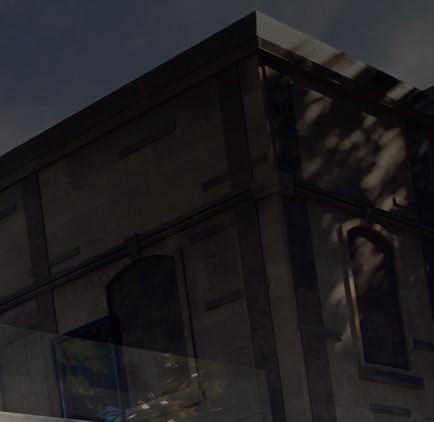

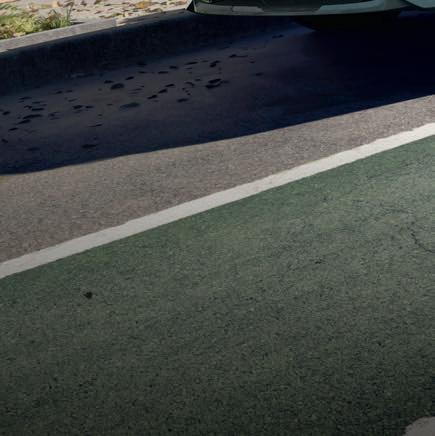

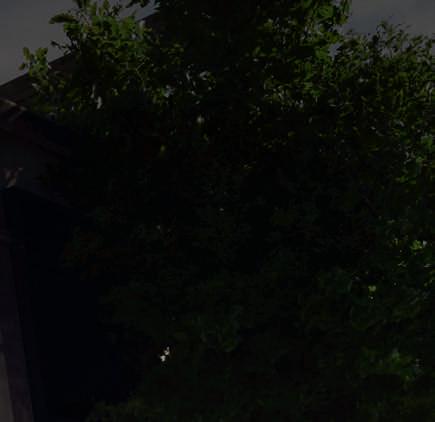




residents to move the country in the right direction. And it’s this dual aspect that I find very interesting in our work.
Can we say what nation branding is, in terms of human and financial resources?
It’s no secret. It’s around €2m per year. As we’re a public initiative, that doesn’t include salaries or employees. We currently have a team of eight people to carry out the work in six different departments. These are fairly limited resources, at least in terms of direct promotion to target groups. But it’s also less and less necessary, because the promotional landscape has changed a lot in ten years--and next year we’ll be celebrating the initiative’s tenth anniversary. The players involved in sectoral promotion have become much more professional. And now there’s the “Work in Luxembourg” initiative, which will be launched at the end of the year. But it’s true that in recent years we’ve put a lot of energy and resources into promoting Luxembourg’s assets to talent. That is, highlighting the country’s “soft” factors: quality of life, infrastructure, stability, nature, cosmopolitanism, open-mindedness, etc.
There are still so many players. Now, we’re really just getting started. I was talking about direct promotional actions--placing visuals about Luxembourg on the Paris metro is no longer our role. Luxembourg for Tourism (in Paris) or Luxembourg for Finance (at London City Airport), they’ll do it much better. And it will be more effective, because they’re addressing a target audience within a sectoral framework.
We’d rather support them in their sectoral actions, rather than try to do general promotion. Sometimes, these
kinds of general actions can even confuse the messages or not reach the right audience. On the other hand, evangelisation work is very important. There are an incredible number of stakeholders in Luxembourg. Since last year, we’ve really started raising awareness among stakeholders in the European institutions. There are 14,000 people working for the European institutions in Luxembourg.
That’s a lot. And they’re probably familiar with Luxembourg. Yes, but not necessarily… how can I put this… they’re not necessarily familiar with the grower’s mindset, they’re not necessarily familiar with our tools when it comes to talking about Luxembourg. And we want to make sure that they really have it on their radar. When you think about what you could say about Luxembourg, you can easily forget certain assets. We’re trying to make this process easier for them.
One last word? Let’s make it happen!

The “Luxembourg. Our Common Ground.” campaign has the particularity that it cannot be understood by anyone without subtitles, as it is told in 10 different languages, thus highlighting the country’s diversity. The film was among the 5 global nominees in the “Best Communication Strategy” category at the City Nation Place Awards in November 2023.
Watch it here :











In 2024, Luxembourg confirmed its growing impor-
tance
in the domain of business tourism, with a record 9,150 Mice events and 241,000 international visitors. The country, which still aims to enter the top 50 in the global ICCA, reached 60th place last year.
In the world of business tourism, the acronym Mice--meetings, incentives, conferences & exhibitions--represents a key segment focussed on professional events and corporate travel. Luxembourg is positioning itself as a strategic and fast-growing destination for this high-value sector. With a blend of infrastructure, innovation and international accessibility, the grand duchy is becoming an increasingly attractive hub for business events in the heart of Europe.
According to the latest figures from the Luxembourg Convention Bureau and Luxembourg for Tourism, the Mice sector experienced significant momentum in 2024. 2024 was an excellent year for business events in Luxembourg, with a 10% increase in the number of events and a 12% increase in the number of participants at these events compared with the
previous year (in absolute terms, their volumes are estimated at 9,150 events and 935,000 participants, 72% of whom are residents).
A historic high
These trends are confirmed on the demand side, i.e., visitors from abroad who have travelled to Luxembourg to take part in business events. Their volume has increased by 16% compared to 2023, with the number of visitors reaching 241,000--a historic high . Revenues have risen by 14%, whilst average expenditure per stay has fallen slightly by 2% between 2023 and 2024 (€780 per person per stay). The sector has definitely left the pandemic years behind: 2024 saw a 27% increase in Mice stays from abroad when compared to 2019, a 17% increase in the total number of
participants and a 5% increase in the number of events.
Compared to 2019, events have become larger and generate more international overnight says. Contributing to this trend, the average duration of events also increased from 1.5 in 2023 to to 1.8 days in 2024. Three-quarters (77%) of business events were organised by Luxembourg-based entities. The remaining events were mainly initiated by organisers from Germany (6%), Belgium (6%), France (6%) and the Netherlands (1%).
The International Congress and Convention Association (ICCA) ranks the countries and cities that have attracted the most international congresses and conferences, and the eagerly awaited 2024 ranking was
unveiled in May at Imex Frankfurt, one of the major trade shows for the Mice industry. For several years, Luxembourg has stated its ambition to reach the top 50 of this ranking. The deadlines are regularly pushed back, and the government is now targeting 2030 to achieve this goal. And for this 2024 ranking, the grand duchy reached... 60th place, leaving it with ten places to climb to reach its target. This result is, however, better than the 2023 ranking (69th place), but worse than that of 2022 (56th place).
It was also at Imex Frankfurt that Luxembourg’s minister delegate for tourism, Éric Thill (DP), in a national pavilion bringing together the grand duchy’s main business tourism players, together with the Luxembourg Convention Bureau, presented the country’s new strategy for business tourism. The objective is to highlight the grand duchy’s many assets: its central location at the heart of Europe, its “exceptional” accessibility, free public transport, “a multicultural environment conducive to exchanges, as well as modern and flexible infrastructure,” he explained.
On this occasion, Thill also unveiled the Luxembourg Convention Bureau’s new identity, based around the slogan: “Meet. Connect. Accelerate.” “This new brand embodies Luxembourg’s ambition to foster impactful encounters, stimulate professional connections, and accelerate projects and ideas in a supportive, sustainable and innovative environment,” the minister added. The LCB’s new executive director, Dr Bettina Bunge, was also officially introduced. Currently the managing director of the Schleswig-Holstein Tourism Board & Convention Bureau, Bunge will take up her new role on 1 November. Among the country’s major players working daily for the sector are the Luxembourg Convention Bureau--supported by the ministry of the economy and the City of Luxembourg--Luxexpo and the European Convention Center Luxembourg (ECCL).

Source : LFT/LCB Business Events survey
MAccording to the latest figures published by the International Congress and Convention Association (ICCA), the secondary destinations in its annual ranking are boosted by the fact that medium-sized congresses and conferences account for 53% of the 11,000 events listed by the association. Today, only 8% of congresses attract more than 1,000 delegates. Another interesting statistic provided by the ICCA is that medical conferences and congresses are the most active, accounting for 17% of all events. This is followed by technology with 14%, science with 13%, and finally education and industry, with 6% each.
Luxembourg is home to the headquarters of a large number of European institutions, international banks, law firms and companies active in finance, technology and logistics. As a result, the country attracts a large number of international companies (particularly in finance, tech and law), generating a constant demand for top-of-the-range meeting rooms in hotels, conference centres or modern coworking spaces. High-end hotels in the grand duchy include the Sofitel Luxembourg Europe and the Hôtel Royal, which offer modular meeting rooms. Added to this are modern coworking centres such as The Office or Silversquare, which offer dynamic and flexible settings that are popular with startups and international consultants.
37 venues in Luxembourg City, 82 in the country
According to the latest figures from the Luxembourg Convention Bureau, 37% of business events organised
in the country in 2024 were for meetings, a figure down 11 percentage points compared to the year before. A total of 82 venues were listed in the grand duchy in 2024, including 37 in Luxembourg City alone. The other 45 venues are divided between the Éislek region (nine venues), the Guttland region (seven venues), the Mullerthal region (seven venues), the Moselle region (twelve venues) and the Minette region (ten venues). These include the châteaux of Urspelt and Vianden in the Éislek, the new hybrid and immersive Gridx complex at Wickrange (15 meeting rooms ranging from 20 to 1,400 square metres) and Casino 2000 at Mondorf-les-Bains (five meeting rooms with a maximum capacity of 1,275 square metres). In Luxembourg’s capital city, there are a number of heavyweights in the events sector: Luxexpo The Box, the European Convention Center Luxembourg and Neimënster Abbey. “We are positioned on each
letter of the word Mice. Of course, in terms of weight, the meeting section will be lighter than large-scale events such as Nexus 2050 or the ING Night Marathon, so the critical mass is obviously lower,” says Morgan Gromy, CEO of Luxexpo The Box. In 2024, the venue--which offers a total surface area of 34,000 square metres of modular and convertible interior spaces, as well as a usable exterior surface area of more than 45,000 square metres--organised more than 100 events and hosted more than 370,000 visitors for more than 3,800 companies.
“Business Events 2030”
And whilst the sector still uses the acronym “Mice,” it is under the name “Business Events” that the government wants to position itself. “What we presented at Imex Frankfurt is not a break with the past, but a strong strategic repositioning within the existing roadmap for business events in Luxembourg.
CEO
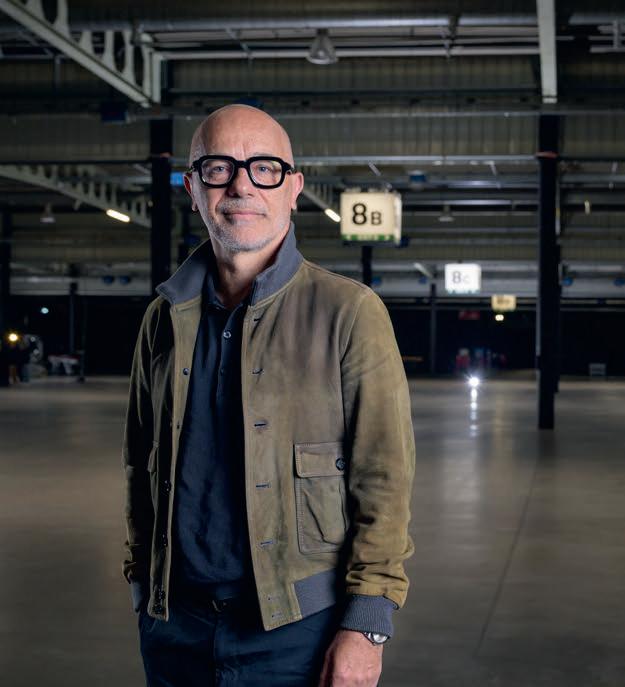
For several years now, we have been laying the foundations: the creation of the Luxembourg Convention Bureau [five years ago, editor’s note], the structuring of the ecosystem, the first successes on an international scale. Now, it’s time to move up a gear. This repositioning, structured around ‘Business Events 2030,’ will enable us to clarify our ambition: to make Luxembourg a benchmark destination for innovative, sustainable and high-content business events. It means adapting our positioning to the new expectations of organisers, boosting our international profile, and making better use of our strengths such as accessibility, sectoral excellence, the living environment and the human approach,” minister delegate for tourism Eric Thill (DP) confirmed to Paperjam.
Incentives on the rise
The “I” in Mice stands for “incentives,” which are trips organised to reward
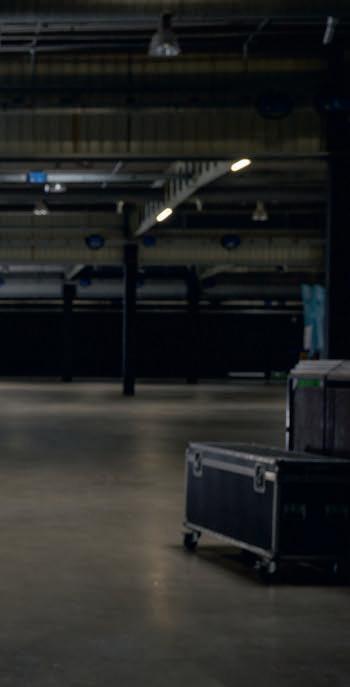
employees or motivate sales teams. Although small, Luxembourg offers a wide range of cultural, gastronomic and outdoor activities (such as visits to castles, wine tasting or nature walks) that are ideal for tailor-made incentive programmes, often combined with the proximity of neighbouring countries (France, Germany, Belgium). This sector accounted for 14% of business events in 2024, an increase of 6%. Luxexpo The Box is also active in the “incentive” sector. “This includes end-of-year celebrations, staff parties and so on,” explains Gromy. “These are often events that are much more discreet because they are private events. If you look at our agenda, it says ‘private event.’”
180 organisers supported by the LCB
In 2023, the Luxembourg Convention Bureau--which works with a team of seven people--supported around 180 organisers, a figure that was up compared to previous years. The LCB has four main missions: to promote Luxembourg as a destination for business events; to provide free support to organisers, whether national or international; to put local players--hotels, event venues, institutions or agencies--in touch with each other; and finally to structure the national ecosystem in order to guarantee a coherent, high-quality and sustainable offering.
Source : LCB
Centre
Beringen
A Guddesch
Findel
Moxy Luxembourg Airport
Leudelange
Regus Altitude
Luxembourg
Casino Luxembourg -
Forum d’art contemporain
Centre National Sportif et Culturel d’Coque
Cercle Cité
Chou Chou
Ciné Utopia
Cinema Kinepolis Kirchberg
Double Tree by Hilton Luxembourg
European Convention Center
Luxembourg - ECCL
Hostellerie du Grünewald
Hotel Le Place d’Armes
Hotel Le Royal
Hotel Meliá Luxembourg
Hotel Parc Belair
Hotel Parc Plaza & Parc Belle-Vue
House of Startups
INNSIDE by Melia Luxembourg
LuxExpo The Box
Malt - Innovative Factory
Mama Shelter Luxembourg
Mudam Luxembourg
Neimënster
Novotel Luxembourg Centre
Novotel Luxembourg Kirchberg
Parc Hotel Alvisse
Philharmonie
Regus Findel Airport
Regus Oksigen
Robin du Lac
Rotondes
Silversquare Liberté
Sofitel Luxembourg Europe
Sofitel Luxembourg Le Grand Ducal
Spaces Gare
Subtile
Tero House 17
Tero River House Luxembourg
Youth Hostel Luxembourg
Munsbach
Légère Hotel Luxembourg
Niederanven
Kaempff-Kohler Niederanven
Sennigerberg
Mandarina Hotel Luxembourg Airport
Luxembourg High Security Hub
Wickrange
GRIDX
Bettel
Châlets Petry Spa
Clervaux
Koener Hotel & Spa
Le Clervaux Design Hotel & Spa
Lipperscheid
Leweck Resort
Marnach
Cube 521
Roost / Bissen
Vitarium by Luxlait
Urspelt
Château d’Urspelt
Vianden
Château de Vianden
Wemperhardt
Hotel Wemperhardt
Wiltz
Aux Tanneries de Wiltz
Altwies
Le Moulin d’Altwies
Beaufort
Youth Hostel Beaufort
Berdorf
Berdorfer Eck
Bourglinster
Château de Bourglinster
Canach
Hotel Mercure Luxembourg Kikuoka
Golf & Spa
Echternach
Lakeside
Trifolion Echternach
Youth Hostel Echternach
Girsterklaus
Hazelnut House
Grevenmacher
Caves Bernard-Massard
Domaines VinsmoselleCaves de Grevenmacher
Remerschen
Domaines VinsmoselleCaves du Sud
Youth Hostel Schengen/Remerschen
Remich
Domaine Claude Bentz
Stadtbredimus
Hotel-Restaurant de l’Ecluse
Wellenstein
Domaines VinsmoselleCaves des Vignerons
Wormeldange
Domaines VinsmoselleCaves Crémants Poll-Fabaire
Bascharage
Hotel-Restaurant Gulliver
Lentz’en Chalet
Differdange
Luxembourg Science Center
Dudelange
Centre Culturel Régional opderschmelz
Esch-Belval
Cinema Kinepolis Belval
Esch-sur-Alzette
Le Fonds Belval
The Seven Hotel
Youth Hostel Esch-surAlzette
Mondorf-les-Bains
Mondorf Domaine
Thermal
Casino 2000
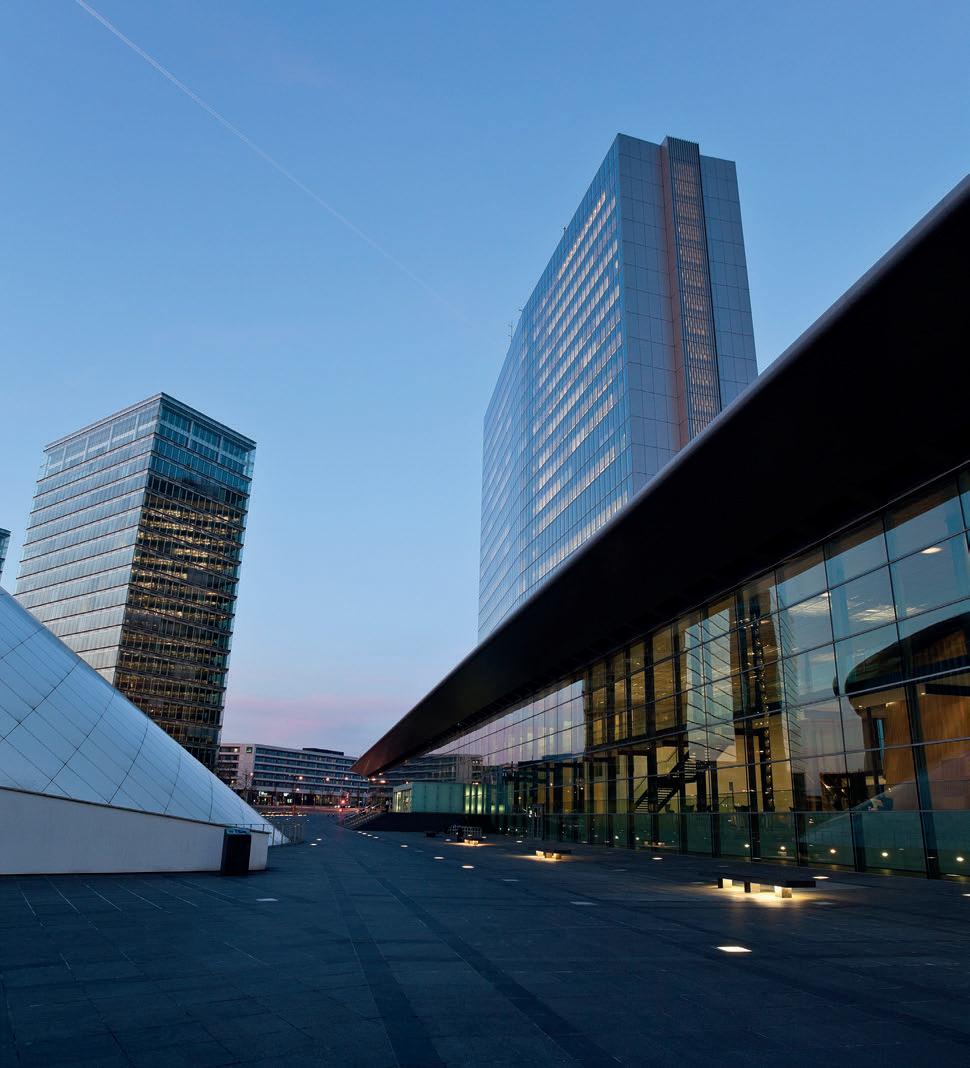
A harmonisation of sectors
“The conference and congress sector involves very large capacity events on the one hand, and, for some time now, smaller capacities of up to 200-300 people with the Sigma room [equipped with a semi-panoramic 12k curved screen, measuring 22.5 metres long and 3.5 metres high, the Sigma room covers an area of 500 square metres and can accommodate up to 250 seats, editor’s note],” adds Luxexpo The Box’s CEO Gromy. “The ‘E ‘ of Mice, which stands for ‘exhibitions’, represents the largest part of our turnover. It’s also where we have the largest critical mass, because these events can be organised over several days--I’m thinking of Nexus 2050, for example, or B2B or B2C events.”
Whilst these letters still have a meaning and provide a clear structure and definition to the outside world, “it is clear that today, and especially since the pandemic, there is a form of harmonisation of the entire Mice sector. The segmentation between each letter is less and less clear-cut,” adds the Gromy. “Even in ‘incentives,’ you can have a conference part and an exhibition part. When you’re looking for ROI, a return on impact, you’re going to look for relays or support in different Mice sectors to increase the value for the people who are going to experience it. Our mission is to offer a memorable experience.”
So how do you quantify the success of an event? “Its weight will be very relative. It can be measured in terms of duration, number of visitors, exhibitors, sponsors, the real impact of the event, and so on. It’s not about the fact that it lasted three days and attracted X thousands of people, but rather what kind of mark does it leave? Nowadays, we work more with our customers on the basis of product management and the lifespan of the event. A project that is going to last two days absolutely has to generate impact months beforehand, but also months afterwards. We have new technologies, AI, but also geopolitical conflicts, environmental issues, socio-cultural changes and so on. All of this creates injunctions that mean we can’t sum up the event in terms of: ‘It lasted three days, it was cool.’ You have to think globally.”
A “complex” occupation
Gromy, who has more than 30 years’ experience in Luxembourg, France and Spain, holding strategic positions within B2C, B2B, private, institutional and associative companies, joined Luxexpo The Box in 2003 as exhibition manager. He was promoted to head of operations in 2005, then chief operating officer in 2008 and finally CEO on 1st January 2018. For this Frenchman, the job has “changed enormously in recent years, because the notion of impact, in terms of selling, transferring knowledge, attracting skills and so on, is now vital. If the organiser doesn’t take them into account, it’s a failure.” “Since the end of the pandemic, there has been an explosion in meetings, face-to-face exchanges and real-life experience. We need to explain to staff, customers and people, so we need to meet up, and we can’t start from a distance.
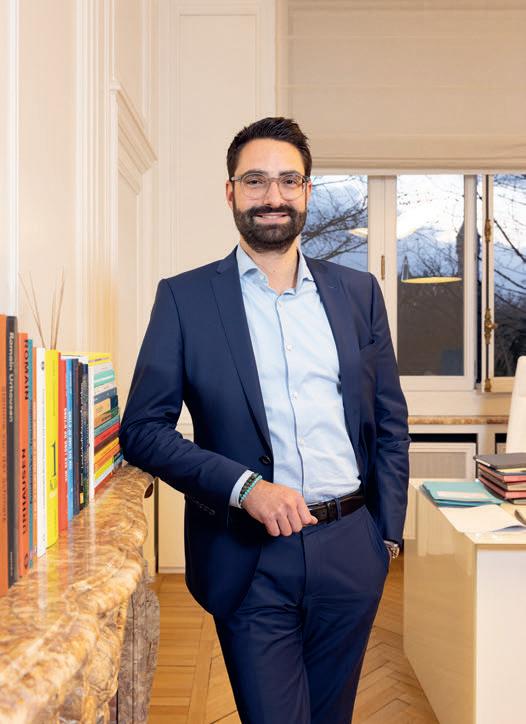
We really are architects of the encounter. We need to understand our customers, not just their budget, but also their objectives, their strategic culture, what they want, where they’re at, etc. They have to explain how they fit into a world that is changing, their industry, their economy, their universe. And this is having an impact on our own strategy and organisation, and we have restructured our business lines to differentiate them clearly.”
Today, Luxexpo The Box counts on a team of 38 people whose primary business is organising events. “Historically, we’ve been known for this, but in the end we only organise four or five events of our own each year. Our second business--which is very important, is being developed and will accelerate--is that of co-organiser. Our third business is supplying products and services. In this third pillar, we also have the whole notion of creating concepts, including urban planning concerts and architectural concepts. In our process, we don’t have a project manager, but rather product managers. As soon as the project is a bit heavy, we manage it as a product.”
“For a long time, 80% of our business was to be the sole organisers of an event. But today, our first two business lines--in which Luxexpo The Box fully or partially assumes the risks--represent 40% of our total revenue (split 60% for our own events and 40% through co-production). The portion related to the rental of spaces and services, where we manage risks on behalf of our clients, represents 60%. Revenue from our three business lines stood at €7m, in line with the previous year, out of a total of €10.5m in total
revenue--including other revenues not related to our core business.”
“The themes have become much more specialised, and all of them have become more powerful. We’ve gone from extremely general events to hyper-specialisation. Our salespeople are no longer salespeople, but key sector managers, so they have economic sectors to manage. Today, communities come to events, like Japan Manga Wave. Large mass events that were a bit generalist have multiplied into smaller events that have become more thematic, more specialised.”
Luxexpo The Box’s Phoenix project
“Our work is currently based on a major transformation project called the Phoenix project, and we’re in the middle of thinking about product development and invention. The first stage was mission 25, which we started and thought about during covid-19, but which actually started in 2022. We thought about changing our values and pillars, and in 2024, we achieved B-Corp certification, a prestigious accolade that underlines the company’s deep commitment to sustainable, ethical and socially responsible practices,” continues Gromy. “We are now on Momentum 30, which means that until 2030, our objective is to consolidate, to use the resources that have been deployed and to take them forward, whilst at the same time consolidating our businesses. Innovating, inventing, developing support and event engineering, finding the best associations, the best partners, the best performers. For example, we are going to commit to creating a number of events, as we did before.
“Thebetweensegmentation each letter is less and less clear-cut.”
So that’s why I’m thinking about cross-functionality and the importance of knowing the area.”
The highlight of the 2024 financial year is the return to positive Ebitda of +€211,000, “reflecting the first tangible results of the transformation undertaken three years ago as part of the Phoenix project. This performance is all the more remarkable given that it is based on our core mission: revenues unrelated to our traditional business are declining, in line with our desire to focus our efforts on our core mission.”
“We also have a project to think about an event that could be international and that we would move and go outside our walls. The aim is to promote the destination, develop our activity and visibility, and free ourselves from a particular location,” confides the CEO of Luxexpo The Box, who is certainly not short of ideas. In short, if the region were to develop its own mobile event, it would promote a form of expertise in other economic centres.
Gromy also confirms that Luxexpo
The Box has definitively turned the page on covid. “I had a premonition that a new normal would set in around 2025, and that’s exactly what we’re seeing. But it’s not the normality of before. These are new paradigms. We need to understand what is happening elsewhere and integrate it into an agile mode, a new model that requires project management, resource management and financial management.”
Today, Gromy sees his job as “complex. And we need to be aware of the subtleties between complicated and complex. Our business isn’t complicated, it’s complex. We have economic, social and political contingencies. They don’t evolve at the same speed, they don’t come at the same time, but they disrupt the system, the organisation, the projects. So projects are alive and constantly evolving.”
For several years now, the government has had the same ambition: that of reaching the top 50 of the ICCA ranking. Each year, the association establishes the list of the best countries and congress destinations for the previous year. In 2024, Luxembourg reached 60th place, “but the objective of being in the Top 50 by 2030 remains entirely valid,” says Thill. “We know that this ranking, which only takes into account a specific category of international events, is not the only measure of impact, but it remains a global benchmark in the sector. We were 69th in 2023, we placed 60th in 2024 and we want to continue this progression. To achieve this, we are acting on a number of levers: support for bids, development of new large-scale events such as Healthcare Week, skills development via the ICCA Skills training centre right here in Luxembourg, and the setting up of a national observatory for business events, which will enable us to measure our progress more accurately.”
Putting himself in the position of observer, Gromy says that he’s “less attached to this ranking. It may be the KPI [key performance indicator] that the government has set itself because it can be shared collectively. But for me, whether you’re ranked 54th or 69th is a completely contingent thing.

In short, I don’t expect this ranking every year, it’s not our triple A. And I don’t know whether it’s the quality that makes the ranking or the relevance. After that, of course, it remains an asset for the LCB, for example, which has a more macroeconomic view, to position the country on the map of business events.”
Events for 100 to 800 participants
What types of events is Luxembourg prioritising? “We have made the strategic choice to target events with strong content, in line with the country’s strengths. This applies in particular to areas such as sustainable finance, life sciences, cybersecurity, space technologies and, more broadly, innovation and research,” explains minister Thill. “We generally host events with between 100 and 800 participants. These are often conferences, seminars and corporate events, where the quality of the exchange takes precedence over the quantity.”
The latest available data shows that a participant in a professional event spends an average of €450 per day. “This is a significant figure, which reflects the quality of the services consumed: accommodation, catering, mobility, ancillary activities. It’s also an indicator of the significant economic impact of the Mice sector for our country. Business tourism is not marginal; it is central to our strategy of economic diversification.
It supports the hotel and restaurant trade, service providers and also Luxembourg’s international image.”
9,150 events w/ 20+ participants (+10% vs. 2023)
935,000 participants at events w/ 20+ participants (+12% vs. 2023)
Source : LFT / LCB Business Events survey

neimënster Centre Culturel de Rencontre Abbaye de Neumünster
28, rue Münster L - 2160 Luxembourg + 352 | 26 20 52 - 1 contact@neimenster.lu
neimenster.lu



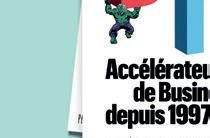
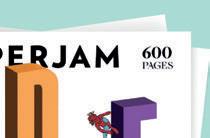

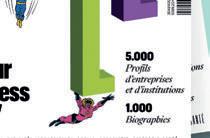




Nicolas Limbourg
For Nicolas Limbourg, the new president of the Luxembourg Insurance and Reinsurance Association (Aca), the second and third pillars must support pension reform. Life insurance, a cornerstone of the financial sector, must also become more competitive if it is to stand up to Ireland.
Journalists Guillaume Meyer/Sylvain Barrette


The debate on pension reform largely revolves around the first pillar. The second and third pillars, which concern supplementary pensions, are rarely addressed. Are insurers being heard?
This is clearly an issue we are trying to raise in the public debate. And I believe we are being heard--to some extent. We’ve already had the opportunity to engage with the minister for health and social security. The reality is shared across Europe: public pension systems are under pressure. Luxembourg is no exception. We must now consider reforms that include the complementary pillars. The second and third pillars are not meant to replace the first, but to accompany and strengthen it. They are essential shock absorbers to ensure a balanced and sustainable system.
What are your expectations regarding the future evolution of the first pillar?
Like any citizen, I want the first pillar to remain strong and to continue ensuring intergenerational solidarity. But we must be clear-eyed: the current system cannot be maintained without adjustments. The choices ahead will be difficult, but postponing them will only make them more painful. We still have an opportunity in Luxembourg to implement reform gradually. We must not let that chance slip away.
In his State of the Nation address, prime minister Luc Frieden proposed extending the contribution period. Do you consider this sufficient? Wouldn’t a mix of measures be preferable? The government has shown courage in acknowledging the objective findings concerning the future of the first pillar. It has acted accordingly by proposing to extend the contribution period. This is an important step, and it is the right direction. However, the contribution period was not the only significant point in the prime minister’s speech. The introduction of new options for phased retirement also seems to us a promising idea, offering flexibility for those who wish to take advantage of it.
What is your takeaway from Frieden’s comments on supplementary pensions? Do you feel your concerns have been acknowledged? The expected reform should focus
“Allshouldemployers be required to offer a supplementary pension scheme.”
primarily, and in the first instance, on the first pillar. But as I mentioned, we continue to believe that the second and third pillars are important shock absorbers. The prime minister also announced measures aimed at making the third pillar more attractive, and we naturally welcome this ambition.
Can we really encourage citizens to turn to the second or third pillar without them having a clear idea, early on, of what they will receive in retirement?
This is a crucial point. At present, the pension projections provided by the National Pension Insurance Fund (CNAP) are only available from the age of 55. This lack of visibility prevents effective planning. We are advocating for every citizen to be able to know their estimated entitlements from the age of 35 or 40. The data exists; it simply needs to be made accessible. Better information would help people prepare and would also make it easier for them to accept the reforms that lie ahead.
In Belgium, for example, such a tool already exists... Exactly. The mypension.be portal gives people access to a personalised

pension estimate from a much earlier age. It’s a model we could certainly draw inspiration from.
Is there a risk in providing figures that may no longer be valid in 25 years’ time?
Yes, there is a risk--but it already exists for today’s retirees. That’s no reason to do nothing. We can provide projections, clearly stating that they are indicative. The most important thing is to inform and educate. Many people believe the state will always be able to cover everything. But when they learn that public pension reserves will be depleted by 2047 if nothing changes, they begin to understand the urgency of the situation.
The second pillar remains underdeveloped in Luxembourg. How can it be strengthened?
All employers, regardless of sector, should be required to offer a supplementary pension scheme. Much is said about individual responsibility, but awareness must also be raised at company level. It is important for businesses to understand that this is a real issue--especially in terms of attracting and retaining talent. Even without


employer contributions, every employee should have the option to contribute voluntarily.
Some argue that a second pillar scheme only makes sense if the employer contributes. What is your view?
I share that view. The second pillar is primarily designed for employer contributions. But what matters is offering flexibility, enabling employees to combine the benefits of the second and third pillars. The second pillar should also be better integrated into the management of personal circumstances--such as during a difficult period, unemployment or a property purchase. It should be possible to use it as a precautionary savings tool or an investment lever.
How can the tax system be used as a lever?
Strengthening incentives is essential. For example, young people could be granted higher deductibility limits up to a certain age, followed by a catch-up mechanism for years in which they did not contribute. This type of practical measure would help stimulate long-term saving. It would also be worthwhile to negotiate with neighbouring countries so that capital received at retirement--built up within a second pillar scheme--could be exempt from tax. If such an opportunity exists, we must seize it. This would enable workers to build savings they can draw on in retirement, even as non-residents, to meet their needs.
And how can the third pillar be made more attractive?
Here too, tax incentives are the main lever. At present, many people reach the deductibility ceiling of €3,200 but choose not to invest beyond that. If the tax benefits were stronger, they would be more inclined to invest more--and over a longer term. This would also pave the way for investment in the real economy: businesses, infrastructure, the energy transition. Retirement savings can play a central role in financing the future.
Are there any European countries that can serve as inspiration?
Yes, countries like the Netherlands and Denmark have highly effective
In March 2025, Nicolas Limbourg succeeded Christian Strasser as president of Aca, the professional association representing insurers and reinsurers operating in Luxembourg. A 53-yearold Belgian national, he holds a master’s degree in law from the Catholic University of Louvain. He began his career as a trainee notary before joining the life insurance company Vitis Life--part of the Monceau Assurances group--in 2000. He has served as CEO and managing director of Vitis Life S.A. since 2013.

Thepensionsystemforworking individualsinLuxembourgisbuilt onthreepillars:
1st pillar:Generalscheme Thisisthecoresystemforfinancing private-sectorpensions.Contributions areequallysharedbetweenthe employee,theemployerandthestate, witheachcontributing8%--foratotal of 24%.
2ndpillar:Supplementarypension schemes(RCPs) Anemployermaychoosetosetupa supplementaryschemeforallorpart oftheirworkforce.Thisisoptionaland considered a form of social benefit.
3rdpillar:Personalpensionsavings Theseareindividualarrangementsthat allowpeopletobuildupretirement savings,eitherasalumpsumoran annuity.Participationisvoluntary,but certainproductsoffertaxadvantages.
CONTRE DES RÉFORMES PASSÉES EN FORCE POUR LA DÉFENSE DE NOS DROITS FACE À LA CASSE SOCIALE CONTRE LE MÉPRIS DU DIALOGUE SOCIAL


supplementary pension systems. But their models must be viewed in context: in those countries, the first pillar is less generous than it is in Luxembourg.
Ultimately, would you favour a less generous first pillar?
That’s not for me to decide. Our model is based on a strong foundation of solidarity, and that should not be called into question. But to ensure its long-term viability, it is necessary to embrace a greater reliance on the complementary pillars.
What role can the European Union play in this process?
Europe can encourage member states to implement harmonised incentives. But beyond that, it must also promote financial education. Today, there is a significant gap between Europe and the United States when it comes to financial literacy. Education must start early, in schools, and be supported by a broader educational ecosystem, including the media. At Aca, we already visit schools to raise awareness amongst young people about these issues. These initiatives need to be scaled up.
Through its capital markets union project, the EU aims to channel more of European citizens’ savings into the real economy. Do you see this as a “game changer” for the insurance sector?

“
We are losing market share to Ireland in the life insurance sector.”
It’s a fundamental challenge for Europe. It’s about investing in infrastructure, in strategic sectors such as defence, the energy transition and emerging technologies. This is a matter of economic sovereignty: building a European cloud, supporting innovation and strengthening our autonomy in the face of other global economic blocs. Insurers, along with banks and asset managers, have a key role to play in this transformation. Through our long-term savings products, we can contribute meaningfully to this project.
How can insurers contribute to Europe’s rearmament as investors?
Insurers are, by nature, long-term investors. They manage commitments that span several decades, particularly in the context of life insurance and pension products. A significant portion of their investments is directed toward the real economy. Today, a large share of property assets in Europe--including in Luxembourg--is owned by insurance companies. The EU’s recent decision to strengthen its defence capabilities opens up new investment opportunities, including in sectors that had previously been excluded on ESG grounds. We are seeing a shift in the investment policies of major financial groups. Some insurers are also reintegrating the defence sector into their strategies.
Is this trend visible in Luxembourg as well?
For the time being, it’s mainly a trend we’re observing at the European level. But major developments that emerge elsewhere tend to eventually make their way to Luxembourg. It’s clear that local market players are watching these evolutions closely. In life insurance--particularly with high-net-worth clients investing via Luxembourg--we’re seeing increased interest in private equity. This type of investment spans the entire real economy, including companies active in the defence sector, both large and small.
What are the main challenges currently facing the life insurance sector?
Luxembourg’s life insurance industry is primarily focused on the international market. Its clientele mainly consists of high-net-worth individuals. The key challenge for our sector today is
competitiveness. And in this regard, Ireland is a direct and serious competitor.
We are losing market share to Ireland. This is already the case in Italy, which is the second largest market for Luxembourg’s international life insurance. Our concern is that this competition will soon extend to our primary market: France. Admittedly, we enjoy a closer cultural affinity with the French, but that alone is no longer enough. We need to remain attractive and responsive.
What needs to be done, concretely, to maintain competitiveness against hubs like Dublin?
We must remain at the forefront of innovation. That means embracing digitalisation and adopting new technologies, such as AI. However, we are still hindered by a major obstacle: professional secrecy in its current form. As defined in Luxembourg, this secrecy restricts our ability to modernise our systems. It also limits our participation in technology projects within the international groups our companies belong to. For example, we are required to obtain written consent from each client before using certain software or platforms--even when they are secure. This puts us out of step with practices in other European countries.
Don’t banks face similar constraints with banking secrecy?
No, they have greater flexibility. For instance, they do not have an individual contract with each client for basic services. They can unilaterally amend their general terms and conditions, simply by informing the client. In life insurance, a contract is signed between the insurer and the client. Any modification now requires a written procedure. This makes it difficult to work with technology providers. We struggle to outsource certain functions. Integrating insurtech solutions is also a challenge. Yet this kind of flexibility is essential if we want to continue innovating and meeting the expectations of a demanding clientele. At Aca, we’ve been working on this issue for several years. Progress has already been made, but we need to go further. This is a critical matter if we are to maintain our position as a centre of excellence in life insurance.
Between2019and2023,theannual inamountofpremiumscollected grewinternationalnon-lifeinsurance by51%,accordingtoAca.
Whilst life insurance remains a key pillar of Luxembourg’s financial centre, non-life insurance has seen strong growth--particularly in the wake of Brexit. For Nicolas Limbourg, this segment has the potential to become a genuine growth driver for Luxembourg: “International non-life insurance has grown significantly in recent years. Luxembourg is ideally placed to support this expansion. The country has extensive experience in the cross-border distribution of insurance products-both life and non-life.”
International players that have chosen to establish themselves in Luxembourg have quickly recognised the strength of its ecosystem. The Aca president continues: “Everything is in place to support their development: an administration that understands the dynamics of international insurance, a regulator dedicated exclusively to the sector--the Commissariat aux assurances--and a culture of dialogue that encourages constructive exchange between the private sector, the regulator and public authorities. Another asset lies in political commitment. Successive governments have consistently aimed to attract foreign investors, including life and non-life insurers as well as reinsurers.”

Climate risk: a future growth area With what results? Limbourg points to a recent example: a major US group already active in Luxembourg, FM Global, has chosen to set up its European research centre for loss prevention in the Cloche d’Or district. This laboratory--specialising notably in materials resistance--will host several highly qualified engineers.
“This illustrates the country’s attractiveness and the ability of its institutions, such as Luxembourg for Finance, to bring in global leaders in insurance,” he notes.
Within the non-life sector, Aca sees insurance against climate-related risks as a key area for future development.
“Recent climate events, such as the floods of the past few years, clearly demonstrate the rising threat of climate risks. It’s an increasingly prominent topic in our sector, and it ranks among Aca’s key priorities,” says its president.
“There’s a growing awareness: unfortunately, these extreme events are set to become more frequent. The sector must adapt to these emerging risks. That means rethinking products, pricing models and also prevention strategies.”
Journalist Guillaume Meyer
Caught between regulatory caution and competitive pressure, Luxembourg’s retail banks are debating whether to integrate crypto-assets into their product offerings. It’s a delicate strategic decision.

Looking to gain exposure to crypto-assets? As a retail investor in Luxembourg, your options include life insurers, online brokers and specialised platforms. But not, perhaps, your bank.
Citing a “prudent and responsible approach to investment solutions,” Raiffeisen does not recommend products linked to crypto-assets, “primarily due to the high volatility and elevated risk levels these assets present, which are often not aligned with the profile of the majority of our clients.” The bank adds, however, that “we are closely monitoring market developments and our clients’ expectations, while remaining open to future opportunities that align with our positioning.”
The Spuerkeess, for its part, offers certain cryptocurrency-linked products through third-party distributors. However, these financial instruments are not available for purchase on
its online platform, as they are classified as “complex” under European regulations. To access and freely trade these products, clients must undergo a suitability test and meet specific internal liquidity criteria.
“We are indeed seeing growing interest from our clients in investment solutions involving crypto-assets,” continues the Spuerkeess, which is actively exploring ways to meet this demand. “Several avenues have already been investigated, including partnerships with specialised players, with a view to integrating such investments into our S-Net offering. At this stage, these considerations have not yet materialised into a concrete project, but the issue remains high on our agenda.”
A disrupted banking model
In other words, supply is not keeping pace with demand, at least not on the
retail side. According to several observers, this gap may reflect a lack of momentum from institutional investors, who traditionally set the pace. These professional actors are most often based outside Luxembourg, which continues to function primarily as a back-office hub rather than a trading centre.
“For the moment, financial institutions remain broadly hesitant to take the plunge into these new types of assets and the technology that underpins them--namely blockchain,” observes Dominique Valschaerts, independent board member and a member of the board of directors at VNX, a virtual asset service provider.
What explains this reluctance? “I’m convinced that these instruments can fundamentally address certain operational inefficiencies. But adopting them has a direct impact on the
profitability and very functioning of traditional banks and financial institutions. It disrupts their business model: services that used to be billed in a certain way can no longer be charged in the same manner in an environment dominated by crypto-assets.”
Still-murky characteristics
At their core, as banks are quick to point out, crypto-products remain high-risk instruments. Valschaerts identifies three main categories of risk. The first, according to the former head at the Brussels and Luxembourg stock exchanges, is technological risk, encompassing all matters related to IT and cybersecurity. In a digital ecosystem like that of cryptocurrencies, security breaches can have immediate and significant consequences on investors’ holdings.
The second area of concern lies in the very nature of the assets themselves. “How do we determine their value? How are settlement or liquidation processes organised? The usual mechanics of traditional financial markets do not always apply to crypto-assets, which forces market participants to adapt not only their operational procedures but also the regulatory framework,” explains the former CEO of Fundsquare.
This leads to the third category of risk: the legal and regulatory framework, which Valschaerts believes remains largely inadequate. In the United States, the Securities and Exchange Commission (SEC) has set up a dedicated task force to help define a new regulatory approach to crypto-assets and recommend practical measures to support innovation while protecting investors. By comparison, “Europe is somewhat lagging behind in this area,” the specialist notes with some regret.
The recent European Markets in Crypto-Assets regulation (Mica) is admittedly “an important first step,” says Valschaerts, but it remains incomplete. “Mica addresses just two main categories of crypto-assets: e-money tokens, which are comparable to electronic money, and asset-referenced tokens, which are backed by traditional assets. But all other tokens still fall outside a clearly defined regulatory scope.” In his view, authorities need to consider expanding the reach
“If banks have not taken the plunge, it’s simply because [of] the regulation.”
Nadia Manzari Founder, Manzari Legal
of regulation to ensure the safe distribution of these products to the general public.
Nadia Manzari, a barrister and former senior official at the Commission de Surveillance du Secteur Financier (CSSF), believes that “if banks have not taken the plunge, it’s simply because the regulation did not previously allow them to do so. The product was unregulated, and the counterparties were not supervised.” In her view, Mica represents a turning point: “What we are witnessing now is the integration of crypto-assets into the financial system.”
This regulation brings the obligations imposed on crypto players closer to those required of traditional financial institutions--particularly in terms of oversight, transparency and risk management. This, according to the technology law expert, helps to legitimise these new assets in the eyes of financial institutions. “Mica finally provides a clear legal framework for several categories of crypto-assets, notably stablecoins.

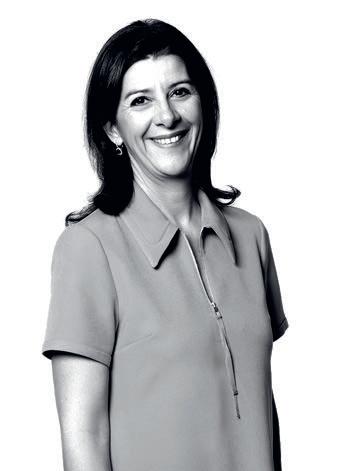
I just wish this regulatory clarity had come ten years earlier!”
Manzari highlights the “complementary” value of Luxembourg’s legal framework, particularly its various so-called “blockchain laws.” These national texts aim to provide legal certainty around the use of blockchain technology, especially in the issuance and circulation of financial instruments. The most recent of these, Blockchain IV, paves the way for alternative intermediation models--such as allowing an entity to act as a control agent without assuming the traditional functions associated with securities issuance and account keeping.
A gradual and cautious entry
Despite this progress, it is still too early to gauge the real impact of this legal framework on the range of crypto-assets being offered by banks, according to the lawyer. “I know some institutions are exploring the opportunities created by this law, but so far I haven’t seen any concrete changes.”
Manzari urges institutions to proceed with caution: “I hope no bank is going to bet everything on crypto overnight.” She recommends a phased approach: testing the market, identifying interested client segments and aligning offerings with real demand. “There is clear customer interest, so the offer needs to reflect that--but in a measured way.”
This is also what regulators expect: thorough risk assessment and appropriate safeguards. “A full crypto strategy isn’t feasible,” Manzari states plainly. Regulators are keeping a close eye on banks to ensure that they are adopting these new products responsibly.
The challenge: evolve quickly or be left behind
For Luc Neuberg, president of the Luxembourg Association for Risk Management (Alrim), caution must not turn into timidity: “Traditional banks no longer have the luxury of waiting. The debate is no longer about whether crypto-assets have a place in the financial landscape. Crypto is a reality, not a belief system. It’s no longer a matter of whether or not you believe--they are already here.”
In Neuberg’s view, the time for strategic decision-making is now. “Banks that don’t jump on board very quickly
will either disappear or survive only if crypto disappears too.” That latter scenario he sees as unlikely, however, given the pace of adoption, particularly among younger generations. “I’m not sure they’ll even know what paper money is,” he adds wryly.
Neuberg is especially critical of the technological lag in many financial institutions. He highlights a striking paradox: “For many banks, Excel remains an indispensable support tool that they haven’t managed to move beyond. Even among custodians.”
The technological challenges are significant. The shift to T+1 settlement--completing transactions one working day after trade--is already proving a major hurdle for many banks as the EU prepares to implement it. “Are all banks ready for T+1? That’s far from certain, given the fragmented nature of the European market. And transforming an internal centralised system takes years.” Yet with the growing prominence of crypto-assets, that timeline is no longer sustainable.
The Alrim’s president expresses less concern for the investment fund sector, which he sees as more agile. “Funds have a real capacity to adapt. There’s ongoing progress on the eligibility of crypto-assets in Ucits--it’s moving forward.” But for banks, the challenge is clear: the time for reflection is over--the time for action has come. The crypto-assets train has already left the station, and those who don’t get on board risk being left behind.


Luc Neuberg, president, Alrim
White-label solutions enable banks to provide crypto-products to their clients without having to build the entire technical and regulatory infrastructure themselves. In practice, a specialised service provider--al- ready operational and regulated--delivers a turnkey solution that the bank can offer under its own brand. This approach is considered relevant by lawyer Nadia Manzari: “For a traditional bank, it’s often simpler--and even safer--to rely on a partner who already has full mastery of the technology.” She notes that outsourcing this type of service is tightly regulated: “Clear rules exist, including the Digital Operational Resilience Act (Dora) and Circular 22/806, which ensure such arrangements are governed within a robust prudential framework.”
You can also read Luxembourg professor Patrick Augustin’s analysis on the Paperjam website.


FRIDAY
JULY 11th, 2025
Across the city’s best terraces



Newly-arrived and Long-term expats / Locals
READY FOR THE ULTIMATE EXPAT RALLY?
Discover Luxembourg in 12 epic stops, 12 vibrant terraces such as Mesa Verde, Amore, Bazaar, Beim Renert, De Gudde Wëllen, Ennert de Steiler, Pas Sage, Shinzo, Tetro, Tube, Urban City, Wëllem, and endless fun!
Connect with the community, explore the city, and collect visas at each stop in your Paperjam Passport!
Games, challenges, and surprises await at every stop! Collect as many visas as possible to win prizes and join 5,000+ participants for an event filled with laughter, discovery, and connection.

Coliving : maîtriser les défis juridiques
Stéphanie Juan Molitor Avocats à la Cour

Résilience du marché immobilier
Pol Theisen A&O Shearman

L’immobilier opérationnel, une classe d’actifs émergente
John Ravoisin & Emanuela Sardi PwC Luxembourg
Contenus sponsorisés

La technologie refaçonne notre manière d’envisager l’immobilier
Romain Muller LuxReal

Le nouveau visage de l’immobilier professionnel
Clémence Lett & Dylan Feber CBRE
Exigences écologiques, changement des modes de vie, technologies diruptives : entre risques et opportunités. Face à « la crise », les acteurs de l’immobilier devront explorer de nouveaux modèles pour faire évoluer les espaces de vie et de travail : le réaménagement des zones urbaines, le développement des infrastructures intégrant des services de proximité et la mobilité façonneront les « smart cities » d’aujourd’hui, et de demain.

Prêts non performants et immobilier : opportunités et risques
Stefanie Ferring & Sébastien Schmitz Clifford Chance

L’art de réinventer le patrimoine bâti
Antoine Pesch Schroeder & Associés

Urbanisme durable : concilier visions et actions
Sylvain Kubicki List
18:30 – 22:30
Kinepolis, Kirchberg

Le Paperjam 10×6 – Talents explorera les mutations profondes du monde du travail. IA et recrutement, marque employeur, expérience collaborateur : comment attirer et fidéliser les talents d’aujourd’hui ?
Avec la montée du travail hybride, l’essor des contrats plus flexibles et la quête de sens et d’équilibre, les entreprises doivent repenser leurs modèles. Diversité, formation continue, bien-être et agilité deviennent clés.
Avec la participation de
– Pierre Gillet (CNFPC)
– Chantal Trausch (RAK Porcelain Europe)
– Professor Dr. Marcus Muller (LUNEX Universit)
– Lise Roda (Pictet Group)
– Olivier Schmitt (Centre Hospitalier de Luxembourg)
– Cindy Bach (Compagnie Luxembourgeoise d’Entreprise)
– Fabrice Encelle (SLG)
– Patricia Martin (FANUC Europe)
– Pierre Bosio (Amundi Luxembourg)
– Virginie Dal (La Mondiale Europartner)

Chers membres,
La saison estivale s’annonce riche et stratégique. Plusieurs rendez-vous incontournables viendront ponctuer les prochaines semaines avant une rentrée déjà en préparation.
Le 1er juillet, la table ronde Digital Assets Ecosystem explorera le rôle croissant des actifs numériques. Cryptos, tokenisation : hier encore marginaux, ils transforment aujourd’hui paiements, propriété et modèles d’affaires. Face à cette évolution rapide, la question du cadre devient centrale : régulation, conformité, sécurité juridique.
Le 3 juillet, le Paperjam Foundersand Leaders-only Cocktail réunira une sélection d’entrepreneurs et de dirigeants, lors d’une Garden Party à l’Ambassade du Japon, pensé pour le partage d’expériences, les connexions ciblées et l’échange stratégique entre pairs.
Le 8 juillet, le Paperjam 10×6 – Talents abordera les mutations profondes du monde du travail. Hybridation, quête de sens, montée en compétences, diversité : les attentes évoluent vite. Il ne s’agit plus seulement de recruter, mais de créer de l’engagement durable.
Le 11 juillet, le Cactus × Paperjam Expat City Rally fera vibrer les terrasses de la ville. Un parcours ludique à travers Luxembourg pour connecter expats et locaux, réunissant plus de 5.000 participants autour d’un objectif simple : découvrir, échanger, s’intégrer.
Enfin, le 23 septembre, le Paperjam 10×6 – NextGen fera dialoguer trois générations autour de cinq défis clés : travail, croissance, transmission, technologie et territoire. Une occasion rare d’aligner visions émergentes et enjeux de long terme.
Heureux de vous y revoir et déjà bonnes vacances d’été.
MICHEL GREVESSE-SOVET Director Paperjam Club
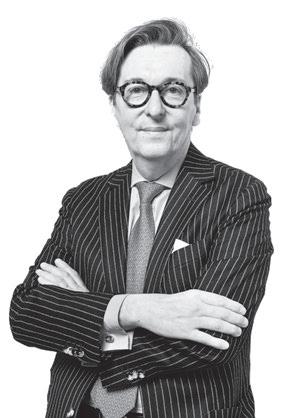
« Le gestionnaire est le garant du cadre réglementaire du fonds. »
ENKELA KOSTURI Alter Domus

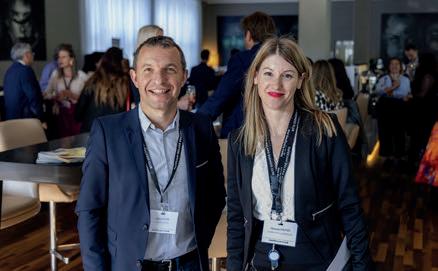
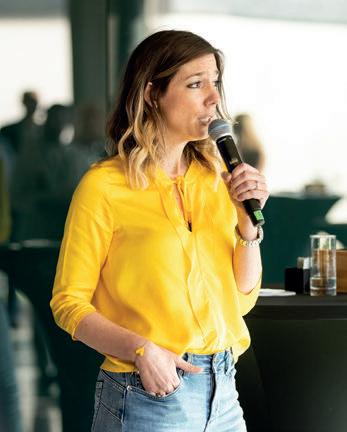



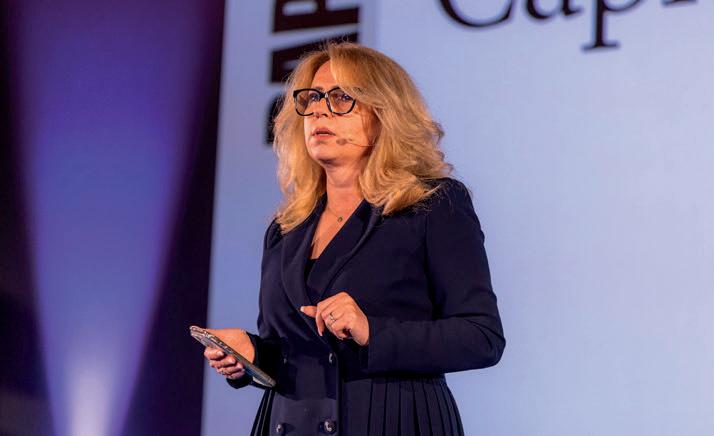

« Lever de l’argent, c’est une dette, pas un trophée. »
CHRISTOPHE BIANCO
33N Ventures



3 Damien Chasseur (CBTW).
4 Laurent Futin (Luxinnovation) et Alexandra Kieffer (Légère Hotel Luxembourg).
5 Carole Bentz (Domaine Claude Bentz).
6 Pedro Castilho (Verbalius), Christophe Bianco (33N Ventures), Lily Wang (Expon Capital), Owen Reynolds (TEKLAS Ventures), Arthur Junges (SPEAR), Enkela Kosturi (Alter Domus), Philippe Linster (House of Startups), Dr. Tahereh Pazouki (Magrid Learning Solution), Sarah Stein (European Investment Fund (EIF)), Tülin Tokatli (Pitch Me First), Michel Rzonzef (LBAN - Luxembourg Business Angel Network), Kasia Bialek (Maison Moderne)
7 Sandra Lucente (Apis)
1.800
C’est le nombre d’entreprises membres qui composent le premier club d’affaires du Luxembourg.
22.000
C’est le nombre de personnes qui font partie de la communauté active du Paperjam Club et avec lesquelles vous aurez l’opportunité d’interagir.
100
C’est le nombre d’événements où chaque membre pourra puiser de l’inspiration sur scène ou lors du contact direct avec d’autres membres.
150
C’est le nombre de modules de formations ouvertes à l’ensemble des salariés des entreprises membres.
Le Paperjam Club est ouvert à toutes les entreprises, les institutions luxembourgeoises et de la Grande Région, quels que soient leur secteur d’activité et leur taille.


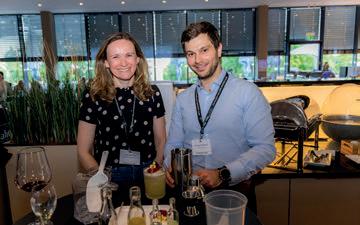
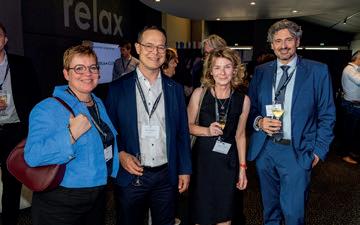
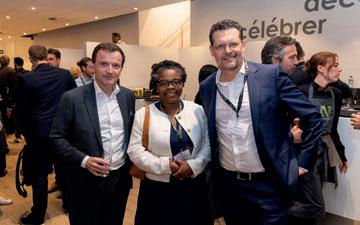
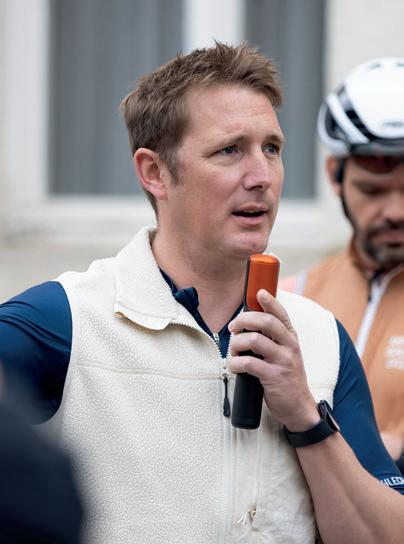
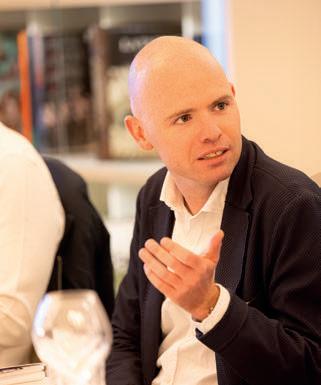
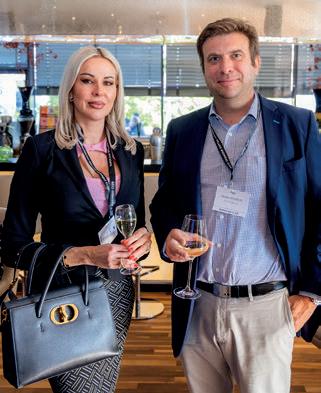
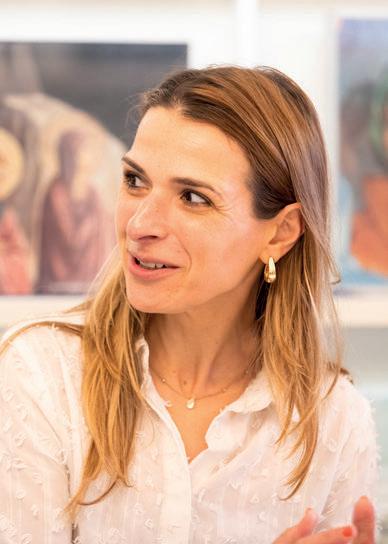
1 Marc Thill, Jana Degrott et Isabelle Thill (Exhale Yoga).
2 Olivia Koziol (Deynecourt) et Nicolas Leclercq (Packaging Lux).
4 Cristina Mocka (Banque de Luxembourg) et Christopher Bauduin (Fund Channel).
5 Natacha Serafin, Olivier Laidebeur (Laidebeur & Partners), Patrizia Luchetta (Charlotte in Red) et Domenico Di Guilio (Parlement européen).
6 Rémi Fouilloy (Morgan Philips Luxembourg), Diamany Ngandu et Adel Nabhan (Banque Degroof Petercam Luxembourg).
7 Amaury Mairlot (United International Management).
8 Andy Schleck (Andy Schleck Cycles).
9 Licinia Cordeiro (SIGI).
01.07
Journée de workshops
17.09
Webinar
Scaling Up: Maximize the valuation of your company.
18.09 Mentoring
25.09
Gen AI Bootcamps /
Paperjam Academy x HUB Institute – Relation client
03.07
Founders- and Leaders- only
Cocktails – Summer Edition: Garden Party
Lead Partners : SD Worx ; ING Luxembourg ; Iko ; Car Avenue
Lunch Time Yoga for Busy People
Déjeuner Carrousel
CACTUS X PAPERJAM Expat City
Rally 2025
Lead Partners : Cactus
Consulter le programme et s’enregistrer
Foodzilla Live – Aperitivo Italiano
Déjeuner Carrousel
Yoga Conference Luxembourg
01.07 18:30 – 21:30 ROUND TABLE
The future is now: crypto-assets & tokenized assets in the digital assets ecosystem
Lieu : Arendt & Medernach
Lead partner : Arendt
EN Join top industry experts to decode the latest trends, compliance shifts, and real-world applications. Gain the insights you need to stay ahead in the tokenized economy.
08.07 18:30 – 22:30 PAPERJAM 10�6
Lieu : Kinepolis Kirchberg
Lead partners : Jobs.lu ; Prolingua ; Luxembourg For Finance
FR Avec la participation de Pierre Gillet (CNFPC), Chantal Trausch (RAK Porcelain Europe S.A.), Professor Dr. Marcus Muller (LUNEX University), Lise Roda (Pictet Group), Olivier Schmitt (Centre Hospitalier de Luxembourg), Cindy Bach (CLE - Compagnie Luxembourgeoise d’Entreprise), Fabrice Encelle (SLG), Patricia Martin (FANUC Europe), Pierre Bosio (Amundi Luxembourg), Virginie Dal (La Mondiale Europartner | AG2R La Mondiale Épargne Patrimoniale).
23.09 18:30 – 22:30 PAPERJAM 10�6
Lieu : Kinepolis Kirchberg
Lead partners : Spuerkeess ; All Eyes On Me
FR Une conversation intergénérationnelle autour de cinq grands enjeux qui façonneront notre avenir commun : The Future of Work ; Entreprises familiales ; Growth ; Tech & AI ; The Future of Luxembourg. Dix d’entre eux monteront également sur scène lors de ce 10x6 inédit.
Stay informed effortlessly!
Join Paperjam on WhatsApp and receive a handpicked selection of the day’s top articles—delivered straight to your phone every evening at 6 PM.
Fantastic! I’m following the channel. Are you?

Restez informé en un clin d’œil !
Rejoignez Paperjam sur WhatsApp et recevez chaque soir à 18 h une sélection exclusive des meilleurs articles, directement sur votre téléphone.
Génial ! Je suis la chaîne. Et vous ?


Passionnée depuis l’enfance, Pascale Nitiga a ouvert son salon Prestige Coiffure à Foetz en 2022. Son expertise – notamment sur le cheveu afro – la conduit à coiffer toutes les femmes sans distinction. Entourée de son équipe, elle a à cœur de proposer plus qu’une simple prestation et met un point d’honneur à délivrer les meilleurs conseils, et même parfois à dire non…
Quand avez-vous su que la coiffure serait votre métier ?
Dès l’âge de cinq ans. Ce qui me plaît, c’est la notion de métamorphose. Par exemple, j’ai des clientes qui souffrent d’alopécie. Pouvoir les aider à reprendre confiance est important pour moi.
Pourquoi êtes-vous aussi formée à la coiffure dite « afro » ?
Pour moi, une coiffeuse doit savoir coiffer tous types de cheveux ! Tout est parti d’une cliente qui en avait marre des défrisages, mais ne savait pas quoi faire. Les techniques sont différentes pour travailler le cheveu, l’hydrater… Il y a d’autres salons au Luxembourg, mais moi je m’attache beaucoup au soin.
Qu’est-ce qui vous guide ?
Je n’ai rien fait d’autre que de la coiffure dans ma vie. J’ai voulu me démarquer, car je trouvais que dans les salons, on parlait de tout sauf de cheveux… Je milite pour des soins et des cheveux naturels, pour encourager les femmes à s’accepter telles qu’elles sont. Je suis beaucoup dans le dialogue, je ne décide pas pour mes clientes. Mais il peut m’arriver de dire non à certaines demandes.
Votre métier a-t-il évolué ?
Internet a été un grand changement. Les clientes posent plus de questions. Cela nous encourage à rester à la page, à nous former sans cesse.
Je me suis formée au head spa et à l’aromathérapie.
Votre quotidien correspond-il à ce à quoi vous vous attendiez ?
Oui. J’ai accompli mon rêve, donc je prends tout avec beaucoup de grâce, même les tâches administratives !
Quels sont les plus grands défis auxquels votre entreprise est confrontée ?
Recruter est compliqué. Il y a des candidats, mais dans mon salon, je ne veux pas de compétition. Ici, on travaille dans le respect, la joie et la bonne humeur. Lors du bilan de fin d’année, si l’on a bien réussi, j’estime que c’est collectif et les salariées ont une prime. Cela fidélise et crée une équipe soudée.
Comment voyez-vous votre entreprise dans cinq ans ?
J’envisage de me former sur les questions liées à l’alimentation et le lien avec les cheveux, et plus globalement la santé. J’aimerais aussi mettre en place une masterclass pour apprendre à prendre soin des cheveux des enfants, en particulier pour les enfants adoptés.


Fondatrice
Pascale
Collaborateurs
Trois coiffeuses et une esthéticienne Arrivée au Luxembourg en 2005, Pascale Nitiga a d’abord travaillé comme salariée dans plusieurs salons avant de se lancer à son compte, au 10, rue de l’Avenir à Foetz.
La version longue sur paperjam.lu.


Téléphone 20 70 70
E-mail press@paperjam.lu
RÉDACTEUR EN CHEF PAPERJAM
Thierry Labro (-105)
SECRÉTAIRE DE RÉDACTION PAPERJAM
Jennifer Graglia (-108)
ASSISTANT EDITOR DELANO
Lydia Linna (-165)
POLITIQUE ET INSTITUTIONS
Marc Fassone (-157), Ioanna Schimizzi (-120)
ENTREPRISES ET STRATÉGIES
Maëlle Hamma (-125), Hugo Hirsch (-126), Guillaume Meyer (-116), Rebeca Suay (-123), Pierre Théobald (-319)
FINANCE
Sylvain Barrette (-153), Kangkan Halder (-150), Jeffrey Palms (-156)
LIFESTYLE ET VIE PRATIQUE
Céline Coubray (-162)
JOURNALISTE / COMMUNITY MANAGER
Emilio Naud (-124)
PAPERJAM BIBLE BIOGRAPHIES ET DATA
Sarah Mersch-Macri (-181)
Jezabel Scolastici (-183)
JOURNALISTES / WEBPUBLISHERS
Didier Hiégel, Sarah Lambolez, Manon Méral
PHOTOGRAPHES
Pancake! Photographie, Nader Ghavami, Jessica Theis
Pour contacter nos collaborateurs
ENVOYER UN E-MAIL SELON LE MODÈLE prenom.nom@maisonmoderne.com
COURRIER POSTAL
BP 728, L-2017 Luxembourg
BUREAUX 10, rue des Gaulois, Luxembourg-Bonnevoie
DIRECTEUR DE LA PUBLICATION
Mike Koedinger
RÉDACTEUR EN CHEF
Thierry Labro
COUVERTURE
Cassandre Bourtembourg (direction artistique) et Pancake! Photographie (Photographie)
Brand Studio
Téléphone 20 70 70-300
E-mail brandstudio@maisonmoderne.com
HEAD OF MEDIA ADVISOR
Francis Gasparotto
ASSISTANTE COMMERCIAL
Florence Saintmard (-210)
CONSEILLERS MÉDIA
Aïssa Abeid (-315)
Laurie Cros (-310)
Géraldine Gij (-307)
Mélanie Juredieu (-317)
Marie Leclercq (-312)
Amandine Linero (-336)
Jean-Michel Losson (-418)
Jean-Claude Negri (-314)
Aline Puget (-323)
HEAD OF CLUB SALES
Virginie Laurent (-322)
HEAD OF STUDIO
Sandrine Papadopoulos
DIRECTION ARTISTIQUE
Cassandre Bourtembourg
CRÉATION GRAPHIQUE
Juliette Noblot
MISE EN PAGE
Julie Kotulski, Elina Luzerne
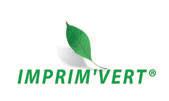
Maison Moderne s’engage à réduire son empreinte écologique. Le magazine Paperjam a bénéficié d’une impression neutre en CO2, d’un papier recyclé Blauer Engel pour sa couverture et d’un papier intérieur durable, tous deux certifiés Ecolabel et FSC�. Please recycle. Vous avez fini de lire ce magazine ? Archivez-le, transmettez-le ou bien faites-le recycler !
www.maisonmoderne.com
Téléphone 20 70 70
E-mail publishing@maisonmoderne.com
PRÉSIDENT
Hugues Delcourt
FONDATEUR, CEO ET DIRECTEUR PUBLISHING HOUSE
Mike Koedinger COO
Etienne Velasti
HEAD OF MEDIA ADVISOR
Francis Gasparotto
DIRECTOR BUSINESS CLUB
Michel Grevesse-Sovet
HEAD OF IT
Antonello Di Pinto
DRH
Nathalie Bourdeau
RESPONSABLE ADMINISTRATIVE Sylvia Leplang
RESPONSABLE DIFFUSION
Quentin Marenic
Tous droits réservés. Toute reproduction, ou traduction, intégrale ou partielle, est strictement interdite sans l’autorisation écrite délivrée au préalable par l’éditeur. © MM Publishing and Media SA. (Luxembourg) Maison Moderne ™ is used under licence by MM Publishing and Media SA. ISSN 2354-4619
Conformément à l’article 66 de la loi du 8 février 2004 sur la liberté d’expression dans les médias, la présente mention est obligatoire « une fois par an, au premier numéro diffusé ». Nous avons choisi de la publier chaque mois. La société éditrice de Paperjam est détenue directement à 100 % par Mike Koedinger, éditeur domicilié au Luxembourg. La direction générale et la gestion journalière relèvent de sa responsabilité.


Navakaraṇa Vinyāsa • Jivamukti Yoga • The Art of Vinyasa Kraman
Mental & Emotional Health • Stress Balance with Ayurveda • Navakaraṇa Sākalya Tantra
Energetic Alchemy: Yin Yoga & Qi Gong • Shiva Form • Elemental Vinyasa • Martial Flow
Massage Therapy • Sound Meditation with Live Music • Vegetarian Catering • Kids Yoga



